IF YOU BUILD IT...
GULF SOUTH COMMERCE PARK AIMS TO ATTRACT ADVANCED MANUFACTURING TO ST. TAMMANY PARISH IN A MOVE THAT SUPPORTERS SAY WILL BENEFIT THE ENTIRE REGION.
JUNE 2023










GULF SOUTH COMMERCE PARK AIMS TO ATTRACT ADVANCED MANUFACTURING TO ST. TAMMANY PARISH IN A MOVE THAT SUPPORTERS SAY WILL BENEFIT THE ENTIRE REGION.
JUNE 2023









The population of our neighbor to the north continues to grow, and as someone who loves facts and trivia (I’m oh so fun at parties), I decided to dig a bit into exactly how, and how much, St. Tammany Parish in particular has changed since we first moved to New Orleans. I have to say, I was a bit surprised by what I found.
In 2010, just over 234,500 people called the parish home. By 2021, that number had ballooned to 269,388 — a 14.8% increase. To put that into a little perspective, in that same time, the population of Louisiana grew by only 1.7% and the U.S. population grew by 7.3%, so St. Tammany Parish grew at a rate twice that of this country. Census estimates for 2022 have the parish growing again to 273,263.
I was also pleasantly surprised to see that this growth is adding more diversity. In 2010, white residents made up 80.7% of the population. By 2021, that number decreased to 76.5% while the population of Black residents grew by 2.1% to 13.6% and the Hispanic/Latino population also saw gains of 1.5%, rising to 6.2% of the population.
What surprised me the most however, is how the age of the parish has been changing. I’ve had multiple friends move their families north in search of more space for the kiddos, less crime and solid schools, but according to the data, St. Tammany Parish is actually getting older. By far the age group that grew the fastest between 2010 and 2021 was those age 65 and older, who moved from 12.7% of the population
to 18%. Meanwhile, the percentage of every other age group decreased.
There’s been a lot of movement toward the north, but there’s a lot of movement going on within it as well, a fact we’re excited to look at in this, our annual Northshore issue. Speaking with St. Tammany Corporation CEO Chris Masingill multiple times over the past month, it was easy to see why he is positively giddy over all the different things in the works up there — from the growth of the parish’s entrepreneurial sector to a 1,000-acre commerce park, to the creative new businesses popping up everywhere, especially in the parish seat of Covington.
If you haven’t made that 24-mile bridge drive lately to check things out, I encourage you to change that. And when you do, make sure to check out the Maritime Museum Louisiana (formerly known as the Lake Pontchartrain Basin Maritime Museum) in Madisonville. It’s a little hidden jewel right on the water and my dad has been kicking butt as its executive director since 2019.
So proud of you Dad. Happy Father’s Day!
Thanks for reading,
KIMBERLEY SINGLETARY EditorKimberley@BizNewOrleans.com
Publisher Todd Matherne
EDITORIAL
Editor Kimberley Singletary
Art Director Sarah George

Digital Media Editor Kelly Massicot
Associate News Editor Rich Collins
Perspective Writer Drew Hawkins
Contributors Chris Masingill, Ashley McLellan, Charlotte Piotrowski, Darrin Piotrowski, Chris Price, Jennifer Gibson Schecter, Rebecca Shaw, Perry Sholes, Melanie Warner Spencer, Poppy Tooker, Keith Twitchell
ADVERTISING / MARKETING
Senior Account Executive Jessica Jaycox Mahl (504) 830-7255 JessicaJ@BizNewOrleans.com

Senior Account Executive Meghan Schmitt (504) 830-7246 Meghan@BizNewOrleans.com
RENAISSANCE PUBLISHING
PRODUCTION
Manager Rosa Balaguer Arostegui
Senior Designer Meghan Rooney
CIRCULATION

Subscriptions Jessica Armand
Distribution John Holzer
ADMINISTRATION
Office Manager Mallary Wolfe
VP of Sales and Marketing Kate Henry
Chief Executive Officer Todd Matherne
For subscriptions, call (504) 830-7231

Last month kicked off awards season in the publishing industry. Over the next few months, media membership organizations host their annual meetings where they recognize publications for excellence in various categories.
In May, Acadiana Profile and Louisiana Life — part of the Renaissance Publishing family and past Magazines of the Year — took home 27 awards at IRMA (International Regional Media Association). It was a great night in Portland at the organization’s 43rd annual meeting for Melanie Spencer, Sarah George, Kelly Massicot and Rebecca Taylor, who make up this incredible team of magazines.
This month, at the 38th annual awards ceremony of the CRMA (City Regional Magazine Association) in Baltimore, Maryland, New Orleans Home — another Renaissance Publishing title — is a finalist for Home Magazine of the Year. Last year, our creative director, Tiffani Amedeo, won Designer of the Year at this annual event.
Also, this month at the AABP (Alliance of Area Business Publications), the Biz New Orleans team of Kim Singletary, Sarah George, Rich Collins, Kelly Massicot, Kate Sanders, Meghan Schmitt and Jessica Mahl is again a finalist for national awards. This team has won numerous national awards every year since it launched in 2014. Excellent work in an association with over 50 titles across the country.
I am so proud of our team: They continue to shine in delivering excellent design and stories of every form to you, our reader. Whether it’s
a column, feature, digital news, blog, video or podcast, this team continues to expand its abilities year after year, and the title’s long list of awards recognizes their talent.
On a personal note, I am looking forward to a few things. This month is our annual Matherne family vacation, which brings everyone together for a week. More than 20 years ago, my parents started this annual tradition in June outside of the holidays and in line with my mom’s birthday and parents’ anniversary. With some of us living outside the area, this vacation serves as another way for my parents to bring everyone together to celebrate family without the stress of holidays. It also doesn’t hurt that they do the planning and pick up the tab for the week. It is a getaway I look forward to every year.
Before heading off on vacation, we are taking a trip to San Diego for the christening of little James. Malayne celebrated her first Mother’s Day and she shines as a new mom. We look forward to seeing her and Jake and celebrating with them.
Have a great summer and get out and relax.


Senior Account Executive (504) 830-7255
JessicaJ@BizNewOrleans.com
Senior Account Executive

(504) 830-7246
Meghan@BizNewOrleans.com



Catch all the latest news, plus original reporting, people on the move, videos, weekly podcast and blogs, digital editions of the magazines and daily Morning Biz and afternoon newsletters. If it’s important to business in southeast Louisiana, it’s at BizNewOrleans.com.
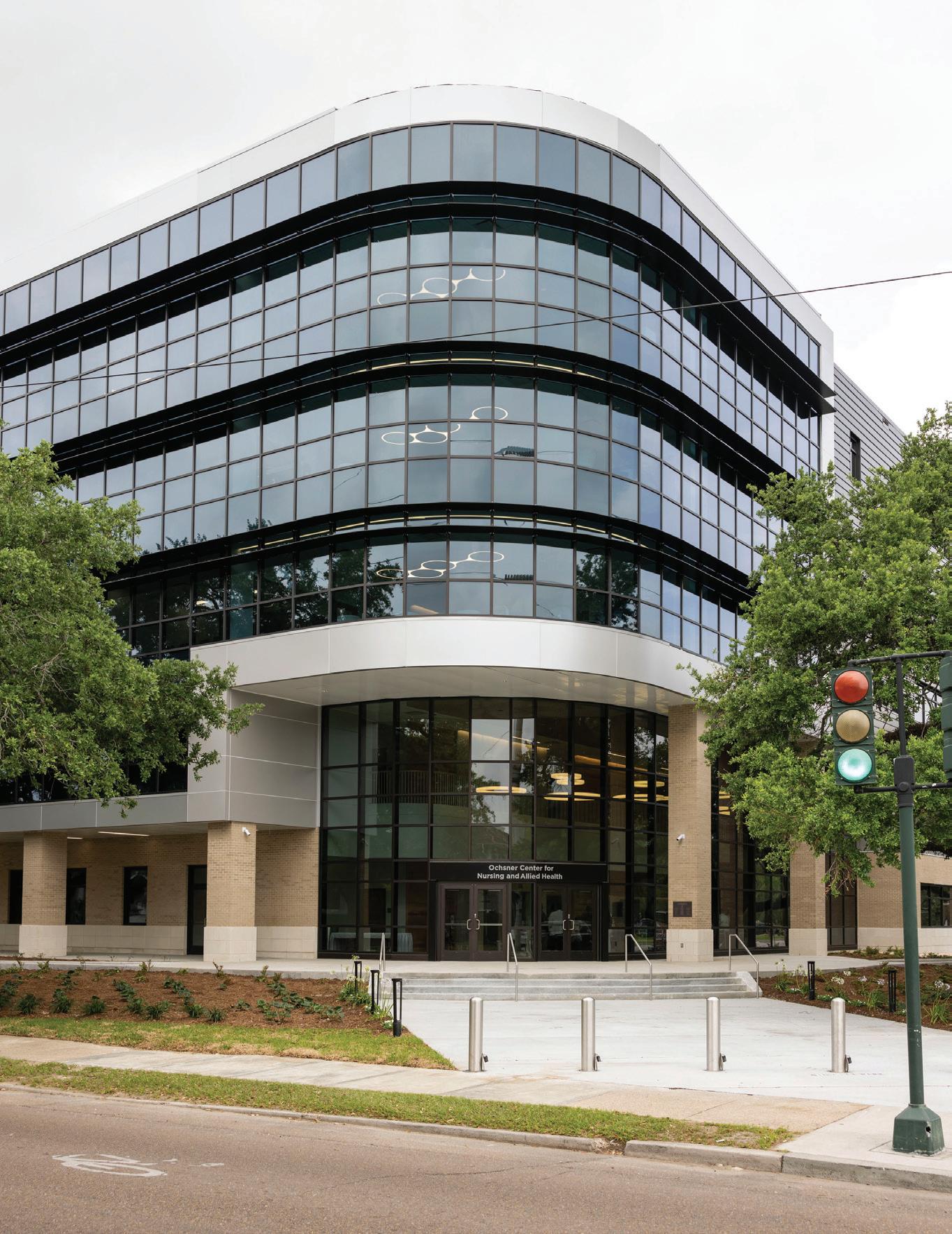

Delgado Vice Chancellor for Academic and Student Affairs and College Provost Cheryl Myers, speaking at the celebration of the completion of the Ochsner Center for Nursing and Allied Health at the Delgado City Park Campus on April 5. The $44 million building was designed by Manning Architects and built by the Lemoine Company. It includes 120,000 square feet of classrooms and labs and can hold up to 1,500 students.
local execution and support to navigate the increasing complexities of construction schedules.
EPISODE 148
Struggling with hiring and retention? Co-owner of Felipe’s Taqueria shares his recipe for success.
Having just broken ground on their fourth location in New Orleans and first in Jefferson Parish, Felipe’s Taqueria continues to build upon its success. Co-owner Pike Howard says the family-run business continues to meet the challenges of hiring and retention, in part by using technology.
Shelby Russ Jr., AOS Interior Environment president and CEO, regarding the April 18 announcement of the AOS acquisition of the Louisiana division of Alfred Williams & Company. The deal makes AOS the exclusive MillerKnoll dealer in Baton Rouge and New Orleans.

EPISODE 147
Super Bowl 2025
Preparation with CEO of Greater New Orleans Sports Foundation
Jay Cicero, CEO of the Greater New Orleans Sports Foundation is leading the preparations for New Orleans to host the Super Bowl on Feb. 9, 2025. It will be the 11th Super Bowl in New Orleans and the eighth in the Superdome.
As the commercial design industry continues to evolve, it is increasingly important to have truly
We have a 100% job placement rate for all of our allied health programs. They graduate from here, and if they want a job they’ve got it.
DID YOU KNOW? Founded in 1817 for the female children of widows left destitute by New Orleans’ yellow fever outbreaks, the community that would later be called Poydras Home was first known as the Female Orphan Society.
On April 26, Poydras Home offered a preview of a $23 million renovation and expansion that is designed to transform the way its nursing home residents live. The new buildings will support the senior living provider’s new status as a Green House Project community.
Introduced nearly two decades ago by a Maryland-based nonprofit, the Green House approach downplays elements of institutional care in favor of a more home-like environment.
“Today, the head of our hospitality department is doing culinary training with our care partners,” said Erin Kolb, Poydras Home CEO, at the event. “They will be cooking meals.
Laundry will be done in a home, just like you and I live in. And that is one of the core values of a Green House home: creating meaningful life each day for the elders who live in that home and having a dedicated team of empowered staff to provide care.”
At Poydras Home, nursing home residents now will be divided into individual “houses” — actually six wings of two three-story buildings — that either hold 12 or 14 people each. The houses are linked by a glass atrium. In each, private rooms surround a community living space that features multiple living areas, a family-style dining room, fireplaces and a giant kitchen, where all meals will be prepared.
All this is designed to support the Green House goal of “transforming institutional long-term and post-acute care by creating viable homes that demonstrate more powerful, meaningful and satisfying lives, work and relationships.”
To meet this goal, staff members are undergoing roughly 60 hours of “universal worker” training to learn how to provide all aspects of care, from medical assistance to preparing meals.
In an effort to make the facility feel more like a home, staff members will no longer wear scrubs. And, in every way possible, the facility is designed to look less like a hospital and more like a home. So, equipment to lift patients from their beds is only installed if necessary, and the equipment itself is designed to be unobtrusive.
By the end of May, Poydras Home’s 64 nursing home residents will move from their current homes to the new buildings, which were designed by EskewDumezRipple and built by DonahueFavret Contractors.
Jack Sawyer, a principal at Eskew and the lead architect for the project, said the design team visited several other Green House facilities to help brainstorm ideas for the new buildings.

“In 2020, we visited several homes in Florida,” he said. “The most inspirational part for me was hearing from the caregivers about the powerful effect the home-like environment had on their guests. They told the story of a woman who had come from a very institutional environment and had really shut down and was really just in her own head. Having her sit in the kitchen and smell the onions cooking really brought her out of her shell. It was a huge transformation of quality of life.”
For the rest of this story, visit bizneworleans. com/poydras-home-unveils-23m-expansionand-completely-new-model-of-care T




A summer’s worth of entrepreneurial opportunities: You’re welcome.
14 DINING
Pascal’s Manale moves from one family to another.

POPPY TOOKER has spent her life devoted to the cultural essence that food brings to Louisiana, a topic she explores weekly on her NPR-affiliated radio show, Louisiana Eats! From farmers markets to the homes and restaurants where our culinary traditions are revered and renewed, Poppy lends the voice of an insider to interested readers everywhere.

the old building back to its former glory. The first purchase was a new $250,000 roof.
“Dad always used to say, ‘I wish people knew how much money we put into the walls,” said Dickie. Richard Brennan, Sr., with his siblings, Ella, Adelaide, Dottie and John, bought Commander’s Palace in 1969 and was well acquainted with the upkeep cost of historic restaurant properties.
Since the acquisition, while Dickie may be joking about changing his name to Giuseppe, Steve Pettus, managing partner and chief operating officer of the Dickie Brennan family of restaurants, has authentic Sicilian roots. His maternal grandmother, Irene Crutti, was known as “Red Grandma” because of the wonderful red gravy she always served.
At 110 years old, the renowned Creole Italian restaurant Pascal’s Manale is famous worldwide as the home of New Orleans’ original barbecue shrimp. Frank Manale opened a bar on the corner of Dryades and Napoleon in 1913, originally sharing the space with a barber and a butcher shop. Raw oysters and poor-boys were served in the bar, but when Frank added a dining room, Manale’s became renowned for steaks and seafood.
Frank had no children, but his nephews — Pascal, Pete, Jake and namesake Frank Radosta — worked at the restaurant from its inception. In 1937, when Frank passed away unexpectedly at the age of 57, the family banded together, and eventually Pascal assumed ownership, changing the restaurant’s name to Pascal’s Manale.
In 1953, when horseracing friend Vincent Sutro told Pascal about a shrimp dish he’d tasted in Chicago, Pascal whipped up a version that Sutro proclaimed even better — and barbecue shrimp was born. When Pascal died suddenly of a heart attack in 1958, his siblings
and offspring kept the family tradition alive for the next 40 years.
The beloved Uptown eatery has served as a home away from home for generations of New Orleanians, including the Brennan family.
“Manale’s was always our neighborhood restaurant,” said Lauren Brennan Brower, recalling countless family times there.
“It was last the place I had lunch with my dad before he passed in 2015,” said her brother Dickie Brennan. “He loved Manale’s.”
When Dickie Brennan & Co. acquired Pascal’s Manale Restaurant on St. Patrick’s Day 2023, famed restaurateur Richard “Dick” Brennan was top of mind for both siblings. Dickie even wore his dad’s emerald-green jacket and shamrock tie to the closing.
“Walking into Manale’s brought me back to my childhood in the early days at Commander’s,” he said. “The kitchen tiles, the wood ceilings — it just all feels so familiar.”
Just as his father had done with Commander’s, Dickie Brennan faced the daunting task of bringing
Pettus discovered his “hospitality soul” working in restaurants during undergraduate and law school.
“I realized I derive such pleasure making people happy, bringing them the joy of the dining experience,” he said. After several years in management at the Bourbon Orleans, in 1990 Pettus was hired as opening general manager of the Palace Café. When Dick Brennan Sr. and family reorganized to form Dickie Brennan & Co. in 1997, Pettus became a partner.
“Dick Brennan was very kind to me,” Pettus remembered. “After we closed on the partnership, we went for a drink. Dick raised a glass and said, ‘To my first non-family partner.’ For him to say that meant the world to me.”
Catch Poppy Tooker on her radio show, “Louisiana Eats!” Saturdays at 3 p.m. and Mondays at 8 p.m. on WWNO 89.9 FM.
“There’s only a handful of 100-year-old restaurants in this city,” Dickie said. “To be able to be the next chapter of the Manale’s story is such an honor. People tell me all the time, ‘My grandfather sat at that table every Friday night and I was there with him for 20 years.’ We don’t own Manale’s, about 100,000 people in New Orleans do! We’re just the latest keepers of the flame.” T


CHRIS PRICE is an award-winning journalist and public relations principal. When he’s not writing, he’s avid about music, the outdoors, and Saints, Ole Miss and Chelsea football.

the United States. The owners have committed $150 million–$200 million over the USFL’s first three years to its operations, with plans to attract an additional $250 million from investors. Fox will air 17 regular season games and one semifinal; NBC will broadcast nine regular season games, one semifinal and the championship game; and FS1 and USA Network will broadcast seven games each.
The league is betting on television viewership and associated revenue due to the advent of legalized sports gambling, now allowed in-person in 30 states and online in 18, to raise interest in its games.
There is a house in New Orleans...”
Well, not yet. The New Orleans Breakers are in the second year of the re-launched United States Football League (USFL) and have yet to play a down in the Big Easy. For the second year in a row, they have played “home” games at Protective Stadium in Birmingham, Alabama. While unique, it’s part of the business plan for the league’s revival. The league is focused on building an initial audience through television. Last season, every team played in Birmingham. This year, roughly half of the teams are playing in their namesake city. The plan is for all teams to play home games in the city they represent.
While locals haven’t been able to see the team in person, through the first month of the season, the Breakers are giving New Orleanians some darn good football. Through the first weekend of May, the team was on top of the standings, undefeated (4-0), and had the best offense in the league. Head Coach John DeFilippo has installed
a high-power offense that might remind some of the high intensity the New Orleans Saints ran under former Head Coach Sean Payton. In that period, quarterback McLeod Bethel-Thompson has led the best offense in the league, averaging 384.3 yards per game — more than 40 yards per game more than their closest competitor. In just four games, running back Wes Hills is the USFL’s leading rusher and has scored eight touchdowns. On the defensive side of the ball linebacker Vontae Diggs is making a name for himself.
As an upstart, the USFL is not a major competitor to the NFL. It has eight teams compared to 32 in the more than century-old NFL. It is not on the same economic — or talent — level as the older league. But there is a niche for professional football in the spring, and the league may have found a path to not only establishing but sustaining itself as a feeder league for NFL hopefuls.
The USFL is owned by National Spring Football League Enterprises Co, LLC, a joint venture between founder Brian Woods and Fox Corporation’s sports unit, Fox Sports in
The league has already changed its pay structure from last year when active roster players made $45,000 and practice squad players made $15,000, players received $850 per win and a $10,000 bonus for winning the championship. This year, pay has increased to $5,350 per week from $4,500 per week ($2,500 for inactive players), $150 a week toward 401K contributions, and a $400 per week housing stipend. That’s quite a difference from NFL players’ 2022 minimum salary of $750,000.
While the league wants teams to play in their namesake cities next season, there is no word on where the Breakers will call home when they “move” to NOLA. In 1984 — their lone season in New Orleans — they played in the Louisiana Superdome and averaged 30,557 fans per game. While the cavernous Dome provides a great NFL experience, it would seem advantageous for the team to work out a lease with Tulane University to play in the cozier confines of Yulman Stadium. Another option would be to renovate the former Zephyr Stadium, which would benefit the NOLA Gold of Major League Rugby.
It will be interesting to see how the league continues to go this spring and into the next year. In ’84, they rushed out to a 5-0 record, only to finish 8-10. If the league survives, and the Breakers continue to win, the team will have a following. Now they just need a place to play. T



KEITH TWITCHELL spent 16 years running his own business before becoming president of the Committee for a Better New Orleans. He has observed, supported and participated in entrepreneurial ventures at the street, neighborhood, nonprofit, micro- and macro-business levels.
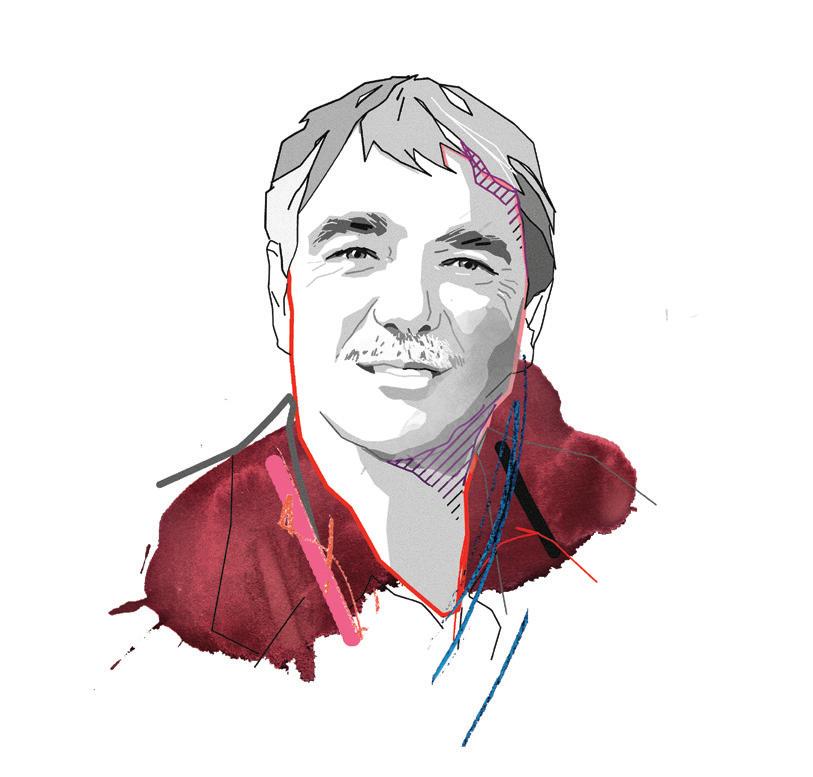
A summer’s worth of entrepreneurial opportunities: You’re welcome.
BY KEITH TWITCHELLjust rub the humidity that’s already in the air into someone’s face, for that ever-youthful appearance.
FAN ON A TRUCK If we can have roaming keyboard concerts enabled by Piano on a Truck, we can certainly lash a couple giant fans to the bed of an old pickup and hire it out for family picnics, front yard cookouts or just some old-fashioned stoop sitting. For an additional fee, a water drip system down onto the fans would spray a gentle, cooling mist over your customers. What a great way to experience outdoors in summer without melting away completely.
It’s about to be summer in New Orleans again, that time of year when most of us barely want to raise a finger, let alone go out and launch a new enterprise. However, if you think about it, summer offers some unique entrepreneurial opportunities. For instance…
SIDEWALK CAFES Literally! Everyone says the sidewalks in summer here are hot enough to fry an egg on – but why stop there? Surely that much heat could grill everything from pancakes to hamburgers, oysters to hash browns. Every city neighborhood would feature its own special tastes — certainly the sidewalks in Lakeview offer different flavors than those in the French Quarter. A low-investment, ultimate pop-up opportunity.
MOSQUITO RACING The only thing more aggravating than the temperatures in summer are the mosquitos. But instead of just swatting these pesky critters, why not harness them for
entertainment? Grab some old, clear tubing, cut it into foot-long pieces, lash the pieces together, catch some skeeters, put one in the near end of each tube, convince some poor soul to put the other end up against their leg, and you’re off to the races! Hard to believe that Caesar’s or the Fair Grounds wouldn’t want to sponsor this. And for extra entertainment value, have your “finish line” friend chug a half bottle of hot sauce before post time and see which mosquito not only bites first but is also the first to explode from the super-spiced blood.
HUMIDITY SPA We all hate the humidity almost as much as the heat and mosquitos, but remember, that’s what keeps our skin looking so young — and therein lies another great opportunity. Just find an unused barstool, draw up a quick sign, maybe raise up an old beach umbrella for a little shade, and open your very own on-street spa, featuring all-natural humidity facials. No supplies needed, you
SNOWBALL FIGHTS There are only so many snowballs even the most dedicated New Orleanian can eat over the course of a summer. But for snowball makers, here’s a great way to boost sales. Few locals have ever experienced the exotic thrill of throwing snowballs at each other, and the pleasure would only be enhanced by getting hit by your favorite flavor. For the over-21 crowd, lacing the snowballs with some adult beverages only adds to the fun.
REVERSE TATTOOS This combines the ongoing popularity of tats with the fact that some people are crazy enough to venture into the summer sun to get a tan. Get yourself some heavy-duty tape — medical or duct will do — and cut up various sized rectangles. Then draw nice silhouette designs on the tape pieces and sell them to the sun-worshipers. Before hitting the beach or the swimming pool, your still-pale customers will cut out the designs and affix the tape to their skins. A few bursts of dangerous UV rays later, they will have lovely reverse tattoos offsetting beautifully their pre-cancerous skin.
Sure, it’s only June, summer hasn’t actually begun, but you should start working on these amazing entrepreneurial opportunities ASAP. Strike now, before the iron gets too hot! T




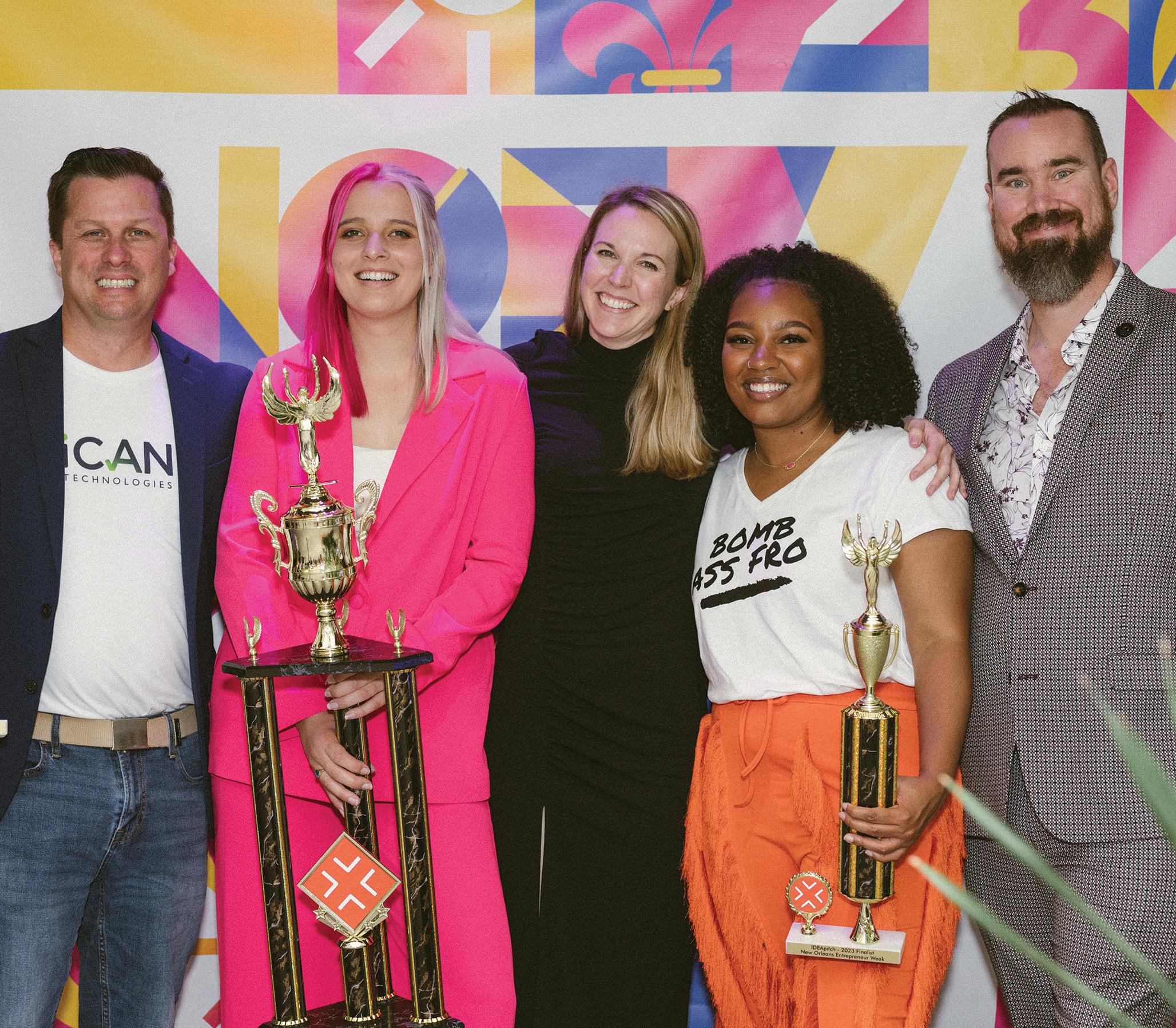
For commercial property, a higher cost of materials along with ongoing supply chain issues are causing delays and higher payouts in the event of a loss. In most cases, property owners will need to increase coverage limits to align with higher property valuations and replacement costs. Without an increase in limits, there could be significant gaps in coverage leaving the business owner holding the bag. We advise our clients to re-evaluate their current insurance budget as well as their limits. At Gilsbar, we know how important it is for business owners to lower their P&C costs and expand their coverages. The cost and risk of owning a business is continuing to rise, and your insurance coverages must rise to the challenge.
The impact of inflation is widespread, and it affects insurance premiums through various factors, including the cost of materials, contractors and labor shortages, increased wages and supply chain disruptions. However, two factors that are often overlooked are the chip shortage and loss of use. Unavailability of chips and supply chain issues can delay automobile repairs and lead to displaced individuals. Fortunately, many insurance policies cover loss of use, meaning they will pay the costs associated. Things to look for when selecting your insurance policy include loss of use and available credits. Consider contacting a broker to take a second look at your current coverage.
The effect of inflation has had a massive impact on the cost of claims for insurance companies. The cost of materials to repair a house has risen dramatically as has the cost of repairing vehicles today. One carrier reported to us that their non-catastrophic claims costs have risen 40% year over year. Claims expenses are the largest expense for insurance companies; when they rise dramatically, the companies have to raise premiums to help make up the difference. When building back your house or building new, consider using FORTIFIED Standards to reduce the chance of claims. Also consider not filing claims for smaller items if you are able to pay out of pocket.
Due to the rise in costs of materials and parts used to repair damaged vehicles and homes most insurance companies are being forced to increase premiums. Specifically for homeowners insurance, the increased cost of building materials is causing the replacement cost of homes to increase. When the replacement cost of your home increases it not only increases your premium, but also your deductibles since they are typically based on a percentage of your dwelling coverage. My suggestion for consumers is to make sure you speak to your agent to ensure you’re receiving every possible discount that is available to you and see if there’s any opportunity for additional savings.
TURLICH
Agent
SEBRINA BUSH HILLARD President Insurance Design & Placement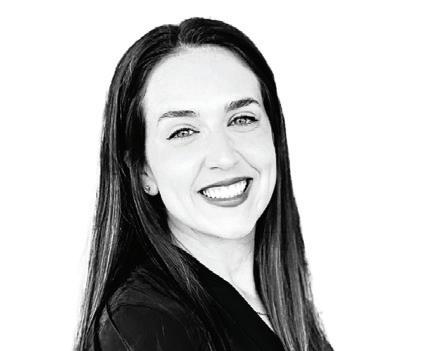


 Kyle R. Beerbohm Agent at Aubert Insurance Agency
Kyle R. Beerbohm Agent at Aubert Insurance Agency

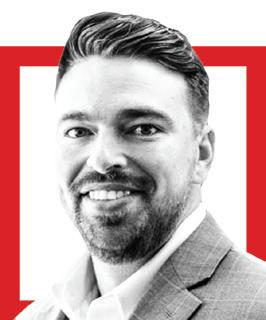
Any carrier that is covering property at replacement cost is affected by inflation because the cost of replacing that property has increased due to inflation. At the end of 2022, CBRE estimated around a 14% increase. If you are seeing this on your renewals, it is probably warranted but you can request a copy of the valuation from the carrier to confirm or ask your broker if they can run it through their valuation software. Consumers will also need to be aware that liability and workers compensation rates are also being affected because litigation/settlements are also reflecting increased costs in medical bills due to inflation.
Roberts Family Insurance Agency
Inflation, supply chain disruptions, increased repair costs and more frequent, severe weather have made it more expensive for insurers to protect customers. That’s why it’s more important than ever to regularly review your insurance coverages with your agent. If you don’t understand a particular coverage, ask them. They should take the time to review everything and listen to your coverage wants and needs. They can then help pinpoint opportunities to save, taking advantage of usage-based insurance programs or finding discount eligibility.



vative technology to help address these complex problems.
Healthcare facilities have been facing a shortage of qualified healthcare professionals, including nurses, physicians and allied health workers. Those that are still working in the health systems could be overworked or feeling the effects of burnout, which in this industry, could result in an increase in medical errors and healthcare-acquired infections.
That’s part of the reason Heidi Raines started Performance Health Partners (PHP), a software company providing patient safety, employee health and quality improvement solutions to healthcare organizations. Raines said that most medical errors occur because of flawed systems, not reckless practitioners, and systems can (and should) learn from these errors. PHP’s tools, which she calls an “enterprise risk management system,” are powered by advanced analytics that help healthcare leaders and managers root out and predict failures and underlying safety issues so that teams can take corrective action quickly.
Company founder Courtney Williams described Torsh as an ed-tech company that provides an online coaching and professional learning platform for teachers and educators. “Simply put, we make it possible for organizations to provide coaching and development to teachers so that teachers can get better,” Williams said. “And better teachers produce better students.”
For Williams, who grew up a poor immigrant from Jamaica, it’s also about improving outcomes for kids who might not have the best resources or access at home. Williams said one of the most critical factors in a young child’s success is the quality of their teachers. “A really good teacher is going to teach more material in a set period of time, than a less good teacher. And if you’re a student who comes from a poor background or comes from a home where you don’t have college-educated parents, then you really need a good teacher to sort of compensate for what you’re not getting at home,” Williams said.
The late, great Leah Chase once said, “New Orleans is a city that is full of life and energy, but it’s also a city that knows how to come together and overcome hardship.” Challenges are nothing new to the Big Easy, but to address the current issues with healthcare staffing and teacher shortages, we have to think outside the box. Some local entrepreneurs are using inno-
“Essentially, we’re helping them uncover gaps in processes and the root cause of incidents and potential incidents so they can prevent patient and employee harm from occurring,” Raines said. Another part of PHP’s solution is putting more of the power in the hands of employees, making it easier for staff to report problems — they can even do it anonymously so there’s no fear of facing retribution for speaking out. “When leadership does not act quickly or take concerns seriously when staff reports incidents, it can contribute to a culture where reporting is not seen as valuable or encouraged,” Raines said. “Empowering employees to speak up and address their concerns can help reduce burnout, anxiety, depression and the likelihood of leaving their jobs.”
Teacher shortages have also been a persistent problem in the city, with schools struggling to fill teaching positions and retain experienced educators. Another local company using innovative technology to help address a major problem in the city is Torsh.
While Torsh is currently focused on using digital tech to train teachers, Williams said the technology can be deployed across a wide range of areas — including healthcare. “We don’t see any good reason right now, though perhaps at a later date, to jump into healthcare,” Williams said. “Because there are people that are using our same concepts in healthcare, they have that knowledge, and they’re making it possible for those teachers to get services or nurses — or nursing students — to get that help.”
There’s an old saying about judging a society by how it treats those in the dawn of life, the children; those in the twilight of life, the elderly; and those in the shadows of life, the sick, the needy and the disabled. The challenges in both the healthcare and education sectors are complex and require innovative solutions to address them. But folks who live here and know these issues intimately, like Raines and Williams, are working to meet and overcome them. T
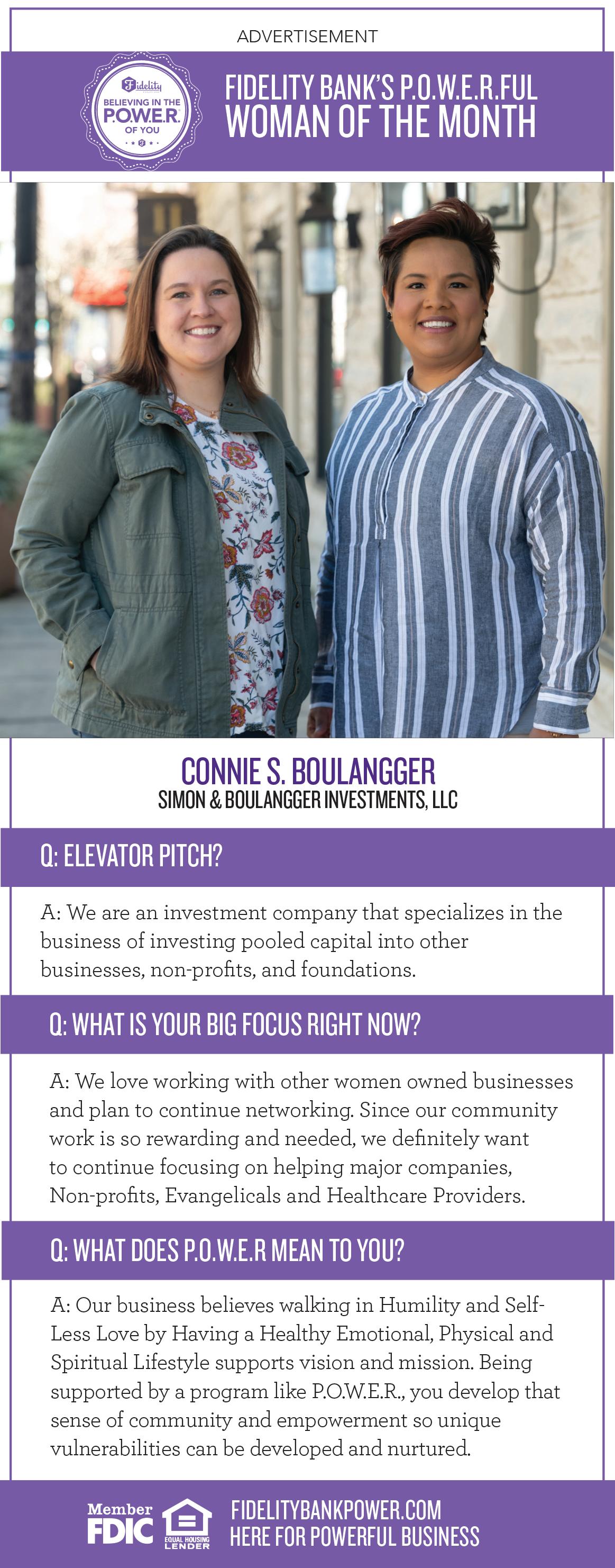


Fresh off another NOEW, New Orleans’s startup sector is thriving.
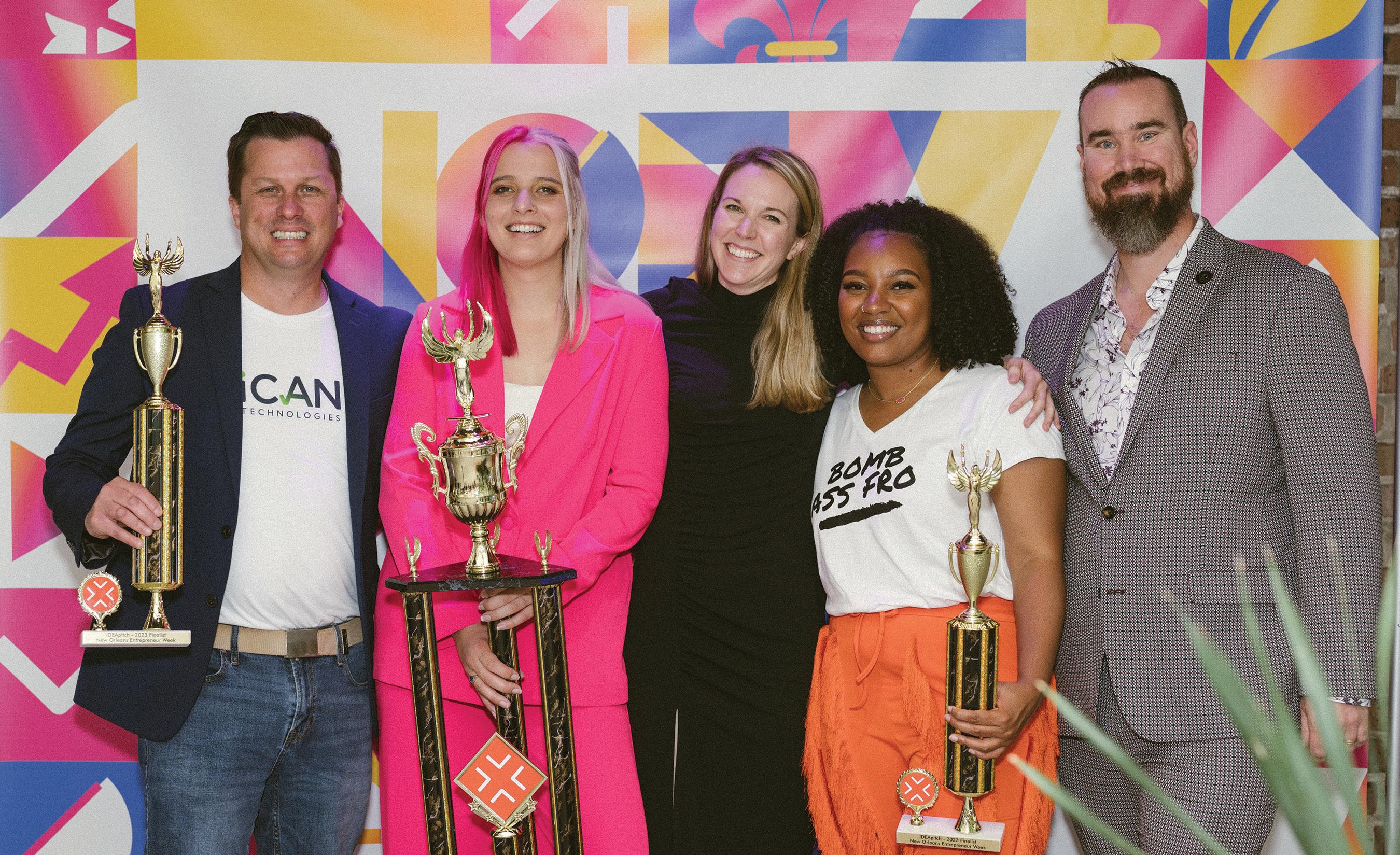 BY DREW HAWKINS
BY DREW HAWKINS
Known for its vibrant music, flavorful cuisine and unique architecture, New Orleans is a city that celebrates individuality, creativity and innovation. Over the past decade, this spirit of innovation has spilled over into the city’s tech industry, transforming the Big Easy into a hub for entrepreneurship and technological advancement.
From co-working spaces to biotech startups, the Crescent City is home to more than 300 tech companies, according to a report by GNO, Inc. The tech sector employs more than 20,000 New Orleanians and generates $3 billion in annual revenue, according to the Brookings Institution, which noted that 76 new companies were founded in New Orleans just in 2020.
KNOW?
In
With remote work becoming more common — especially in the tech industry — people can more commonly choose where they want to live. And often, people choose places with unique cultures and a strong sense of community. In other words, places like New Orleans.
“One of the interesting things about Louisiana is you have a lot of people who come here or have deep ties here, who may leave to take jobs in the industry in other places like New York,” said David Facey, co-founder and CEO of Event Tree, a startup described as a “ticketing platform that helps eliminate problems that currently come with selling tickets and promoting events” (think Ticketmaster, minus the exorbitant fees and sordid history with Taylor Swift). “But because of the culture and lifestyle, they always come back. So, when they come back here or
decide to move here, they bring those different walks of life and experiences, and it makes the tech scene even stronger.”
This year’s New Orleans Entrepreneur Week (NOEW) this past March, took a step further in marrying the city’s culture and tech scene with the launch of NOEW Fest, a three-day lineup that featured more than a dozen live music artists at Generations Hall and the Broadside. Now in its 12th year, NOEW is the premier tech networking event in the Gulf Coast, and an important resource for both established companies and brand-new startups alike.
“The people at this event go on to become advisors, co-founders, partners,” said Facey. Along with co-founder David Jones, Facey said NOEW has been critical for the survival of startups in the region. “Last time we were here, we met someone who ended up serving on our advisory board. We met investors,” Facey said. “We met engineers that we worked with. It’s all those different hubs, spokes in the wheel, we met from NOEW.”
NOEW is produced by Idea Village, a nonprofit business accelerator that plays a vital role in building and sustaining the vibrant startup community in the city. Jon Atkinson, CEO of Idea Village, said that Event Tree and companies like it are perfect examples of what he calls “culture tech.”
“I would say that they’re a good example of why we do it. To be able to bring someone like them in and provide some value there,” Atkinson said. “They’re innovating within the business model of culture. They create an opportunity to basically engage your community as an event promoter and pay them instead of paying Ticketmaster, and I think that’s a great idea.”
For Atkinson, the economy of building startups and building innovative companies from the ground up really starts and becomes much more impactful, the more density that can be created. He pointed to companies that had recent substantial (i.e. massive) exits totaling more than $2.5 billion in the last two years, like Lucid and Levelset, as huge wins for the local tech industry—but also as examples that success stories aren’t just one-offs.
“I think that overall, we’re proving that innovative industry-leading companies can be built here, and we’re starting to prove that we can do that in a repeatable and scalable way,” Atkinson said. “It’s becoming more of a system and less of isolated incidents. It takes a lot of effort to get that sort of first turn of the flywheel moving, but now things are starting to move a little bit faster and they’re starting to build on each other, which is really exciting.”
Similar to Idea Village and NOEW’s support of tech startups, the New Orleans BioInnovation Center (NOBIC) supports new startups in the bioscience industry. A private 501(c)(3) biotech business incubator that was founded with the mission to create a successful biotech ecosystem in New Orleans, NOBIC has helped create more than 500 jobs and generate $144 million in economic activity since its opening in 2011, according to a report by the Louisiana Economic Development (LED) agency.
Kris Khalil, executive director of NOBIC said that in the years following Katrina, New Orleans became a hotbed of innovation and entrepreneurship, with a thriving community of tech startups and established businesses. Additionally, the city’s unique blend of culture, history and talent has attracted a diverse range
of companies, from healthcare startups to gaming studios to software development firms.
“There is also a strong focus on collaboration and community building in the New Orleans tech ecosystem,” Khalil said. “Events like New Orleans Entrepreneur Week bring together entrepreneurs, investors, and industry experts from around the world to share ideas and network. Universities like Tulane, LSU Health, UNO and Xavier are constantly spinning out new technologies and building out internal innovation support capacities, which is exciting.”
Successes in the local biotech industry are also becoming more common. Khalil said Fluence Analytics, a company that provides industrial process monitoring systems using hardware and software technology to measure and control real-time changes in materials, is a great example. The company received funding from BioFund in 2014, which helped them develop their first prototype. “They were able to leverage the funding and resources provided by NOBIC to develop a product that addresses a critical need in the industrial sector,” Khalil said.
Fluence Analytics’ technology has a wide range of potential applications, from improving the quality control of pharmaceuticals to optimizing the production of polymer materials. Khalil said the company’s innovative approach and potential for global impact made it an ideal candidate for NOBIC and BioFund support.
Since receiving BioFund funding, Fluence Analytics has continued to grow and succeed. In 2022, they were acquired by Yokogawa Electric Corporation, a global leader in industrial automation and control. For Khalil, this acquisition demonstrates the quality of Fluence Analytics’ technology and the potential for innovation in our region.
“The sale of Fluence is a testament to the long-tail of specialized innovation, particularly as it relates to university-affiliated technology,” Khalil said. “For BioFund, this sale means that we have proven our fund’s investment thesis, and we will be able to deploy these investment capital returns into an additional 15-20 new deals in the next 36 months.”
Recently, LED announced $113 million in State Small Business Credit Initiative (SSBCI) funding, which Khalil said will greatly impact the early-stage capital landscape in Louisiana. “This means that firms such as the New Orleans Startup Fund that provide funding and mentorship to early-stage startups will have more dry powder to deploy,” he said. “Despite all of the macro-economic headwinds, there’s never been a better time to start a business in Louisiana than right now.” T
“
”
I think that overall, we’re proving that innovative industryleading companies can be built here, and we’re starting to prove that we can do that in a repeatable and scalable way.
Jon Atkinson, CEO, Idea Village
CHRIS MASINGILL has served as the chief executive officer of St. Tammany Corporation since July 2018. He may be reached at CMasingill@sttammanycorp.org.

In the last year, St. Tammany Corporation has launched two new programs aimed at fostering collaboration and innovation in the parish.
BY CHRIS MASINGILLSt. Tammany Corporation is the economic development organization for St. Tammany Parish. Following our reboot of economic development in St. Tammany in 2018 and the launch of our comprehensive strategic plan THRIVE2023 in 2019, the St. Tammany Corporation team has diligently pursued opportunities to foster strategic partnerships and deliver robust technical assistance to businesses.
Most recently, St. Tammany Corporation launched two dynamic and innovative regional partnerships in coordination with partners in St. Tammany, Washington, and Tangipahoa parishes: Northshore Healthscape and STartUP Northshore.
NORTHSHORE HEALTHSCAPE: A COLLABORATIVE ENHANCING THE PULSE OF OUR REGIONAL HEALTHCARE ECONOMY
Healthcare is a major economic driver on the Northshore in terms of both jobs and productivity, contributing more than $1.5 billion to the three-parish GDP. The industry represents 22,000 jobs in the area, and demand continues with 5,000 unique postings for jobs in the past 12 months. Projections indicate that jobs in this sector will increase 11% by 2026.
As the population grows across the Northshore, local healthcare leaders have expanded services to improve access to care closer to home. Northshore healthcare institutions need a talented and skilled workforce qualified to provide these enhanced services, so educating and training the next generation of talent is paramount.
In May 2022, “Northshore Healthscape: A Collaborative Enhancing the Pulse of our Regional Healthcare Economy” officially launched. Northshore Healthscape is an economic development initiative that will harness competitive advantages, enhance the workforce, and promote the Northshore as a healthcare destination. Recognizing the opportunities, challenges and needs of our healthcare ecosystem, the priority areas of work for the pilot program are capacity building, workforce and talent, ecosystem development and strategic implementation.
The initiative is led by Ashley Llewellyn, St. Tammany Corporation’s director of strategic initiatives, and key stakeholders include North Oaks Health System, Ochsner Northshore-Mississippi Gulf Coast Region, Our Lady of the Lake Northshore, Slidell Memorial Hospital, St. Tammany Health System and St. Tammany Corporation in collaboration with Northshore Technical Community College and Tri-Parish Works.
In August 2022, St. Tammany Corporation launched STartUP Northshore, a three-year Northshore regional pilot program with the purpose of catalyzing entrepreneurship, innovation and business formation on the Northshore. Progress to date on this initiative includes the formalization of a strategic partnership with The Idea Village, anchored by the launch of the IDEAinstitute Northshore program; the hiring and onboarding of an entrepreneur-in-residence staff position to serve as the program manager and point of contact for all things relative to entrepreneurship and second stage companies; and the facilitation of regional programming for area founders.
IDEAinstitute Northshore’s fall 2022 cohort welcomed a diverse group of 16 engaged founders across 14 companies and 12 industries who completed the 10-week accelerator program. Cenzo Caronna, St. Tammany Corporation’s entrepreneur-in-residence and program manager, facilitated a curated experience for Northshore founders by hosting one-on-one coaching sessions, coordinating in-person networking opportunities and recruiting mentors to take part in Coach Week.
This March, STartUP Northshore hosted the Northshore’s first ever NOEW in Your Neighborhood event as part of New Orleans Entrepreneur Week (NOEW) at Palmettos on the Bayou in Slidell. Nearly 80 local entrepreneurs, innovators, investors and creatives with a passion for business came together to celebrate and learn more about entrepreneurship on the Northshore.
The second cohort of IDEAinstitute Northshore is currently underway, with 23 founders participating in the 10-week accelerator program. For more information about STartUP Northshore, visit STartUpNorthshore.com and follow our dedicated STartUP Northshore Facebook and LinkedIn pages. T


Another risk is the potential for AI to perpetuate bias and discrimination. AI algorithms are only as unbiased as the data they are trained on, and if that data is biased, the resulting algorithms will be biased as well. This can lead to discriminatory practices in areas such as hiring and lending, which could result in legal and reputational consequences for businesses.
Despite these risks, there are several reasons to feel secure that AI is not replacing human workers and is simply a tool. First, while AI can automate some tasks, it cannot replicate the creativity, empathy and critical thinking skills that are essential to many jobs. In fact, many experts believe that AI will augment human workers rather than replace them.
Second, AI is not a silver bullet. It is only effective when it is used in the right way and in combination with other tools and techniques. SMBs should focus on using AI to augment their existing workflows and processes, rather than relying on it to solve all their problems.
As a business owner in the Greater New Orleans area, I’ve been keeping a close eye on the rapid advancements in artificial intelligence (AI) technology. As the owner of a managed service provider (MSP), I’ve seen firsthand how AI has become an integral part of many industries, including small and medium-sized businesses (SMBs). While there are undoubtedly many benefits to using AI, there are also risks that SMBs need to be aware of.
On one hand, AI offers a wide range of benefits to businesses of all sizes. For example, AI can help automate repetitive tasks, freeing up employees to focus on more strategic work. It can also provide businesses with valuable
insights by analyzing large amounts of data and identifying patterns that would be impossible for humans to detect.
Additionally, AI can improve customer experiences by providing personalized recommendations and 24/7 support through chatbots. This can help businesses build stronger relationships with their customers, leading to increased loyalty and repeat business.
However, there are also risks associated with the use of AI, especially for SMBs. One of the biggest risks is the potential for AI to be hacked or manipulated. As AI becomes more prevalent, it is likely to become a target for cybercriminals looking to exploit vulnerabilities in the technology. This could lead to data breaches, loss of confidential information and reputational damage.
Finally, SMBs should take a proactive approach to managing the risks associated with AI. This includes investing in cybersecurity measures to protect against hacking and manipulation, and being vigilant about the potential for bias and discrimination in AI algorithms. SMBs should also be transparent with their customers and employees about how they are using AI and what measures they are taking to manage the risks.
AI is a powerful tool that can provide many benefits to SMBs. As MSP owners, it is our responsibility to help our clients navigate these risks and ensure businesses are using AI in a responsible and effective way. By taking a proactive approach to managing the risks associated with AI, SMBs can unlock its full potential and create a competitive advantage in today’s digital economy.
NOTE: This article was generated by Charlotte Piotrowski on behalf of Darrin Piotrowski using ChatGPT technology. T
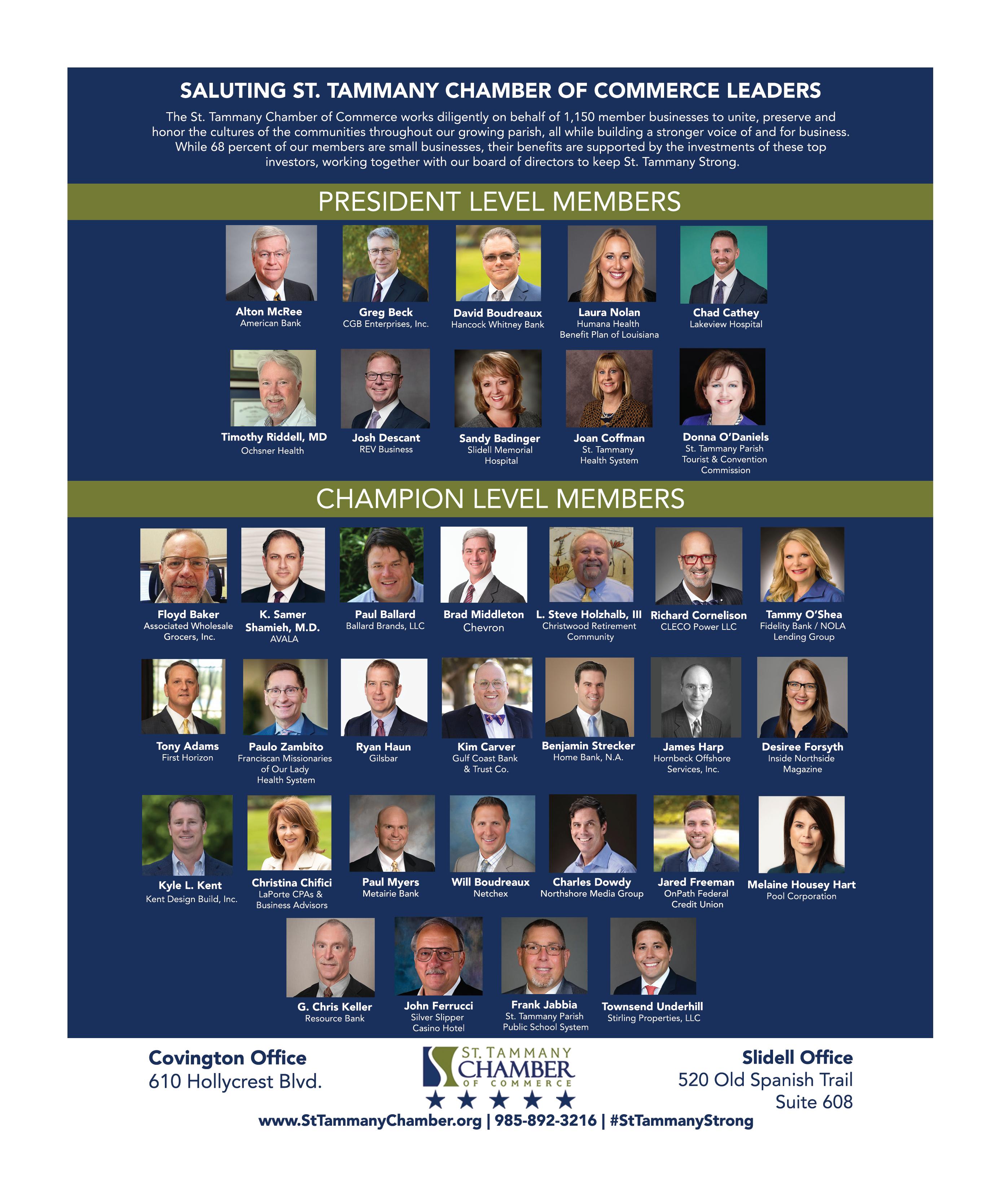 BY KIM SINGLETARY PHOTOGRAPHS BY ADRIENNE BATTISTELLA
BY KIM SINGLETARY PHOTOGRAPHS BY ADRIENNE BATTISTELLA

GULF SOUTH COMMERCE PARK AIMS TO ATTRACT ADVANCED MANUFACTURING TO ST. TAMMANY PARISH IN A MOVE SUPPORTERS SAY WILL BENEFIT THE ENTIRE REGION.
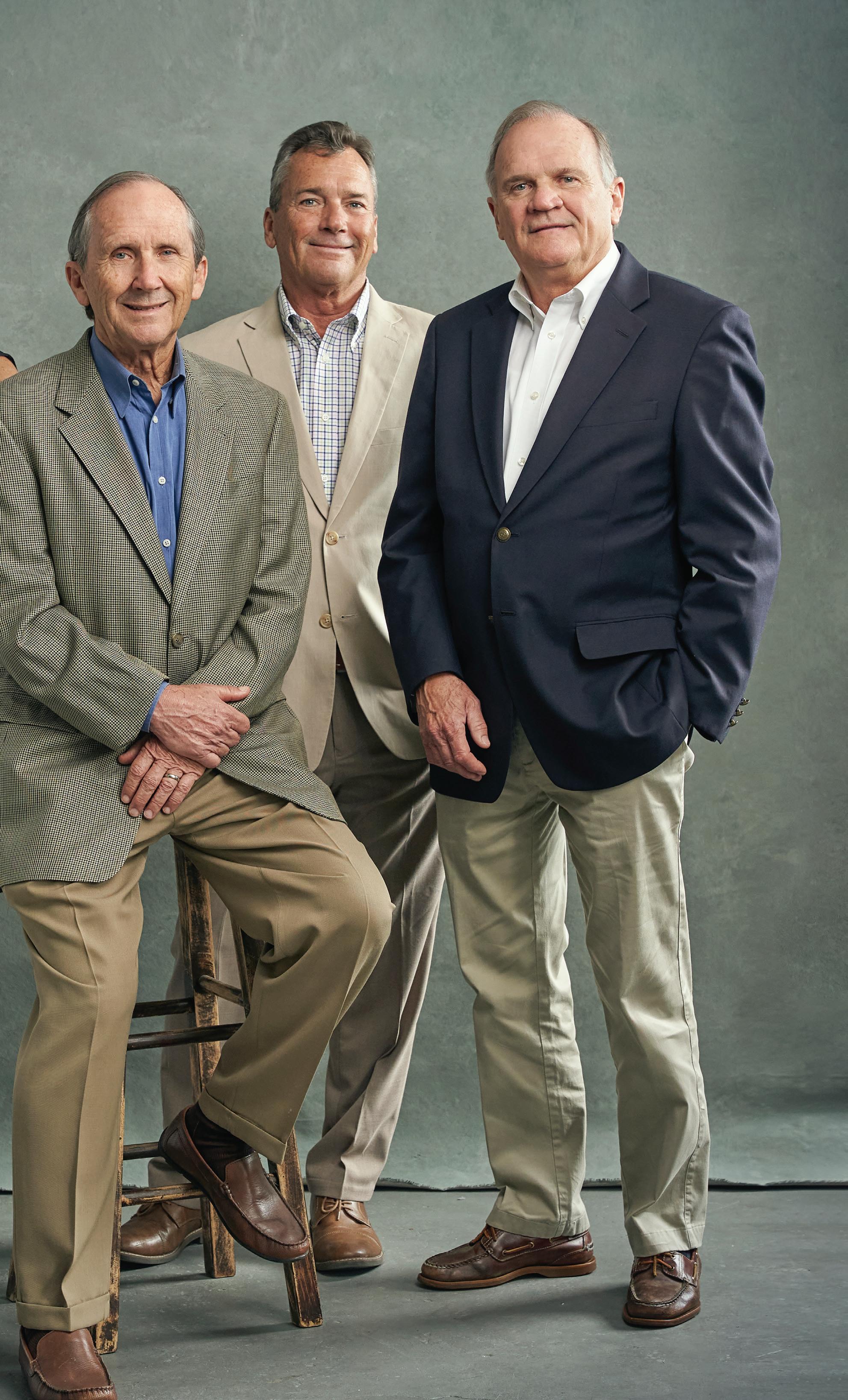 L to R: Claire Crosby Dipol, John Crosby, Patrick Crosby and Harry Crosby of Crosby Development
L to R: Claire Crosby Dipol, John Crosby, Patrick Crosby and Harry Crosby of Crosby Development
INNOVATION, HIGH WAGE JOBS (many of which boast an average pay almost double that of service sector jobs but don’t require a four-year degree), a significant tax base — the advanced manufacturing and logistics industry offers all of this and more. Critical to the American economy, the manufacturing industry accounts for 20% of the nation’s capital investment, 35% of productivity growth, 60% of exports, and 70% of business R&D spending.
IAs such, it’s not surprising that, according to research by McKinsey & Company, manufacturing is the main economic engine and primary employer in about 500 counties in the United States.
St. Tammany Parish, however, is not one of them.
But ground has broken on a project that aims to change that — a project that GNO, Inc., President and CEO Michael Hecht has proclaimed “a critical part of the future strategy for the Greater New Orleans Region.”
At the intersection of Interstate 12 and Louisiana Highway 1088 sits 919 acres of undeveloped land owned by Crosby Development that has been christened the Gulf South Commerce Park. The park’s goal is to attract local and global advanced manufacturing and logistics (AML) companies to call it home.
It’s an idea that Chris Masingill, CEO of St. Tammany Corporation — the economic development organization for the parish — thinks is a perfect fit for St. Tammany and critical enough to the parish’s growth to be among the goals of the organization’s five-year strategic economic development plan, THRIVE2023.
“The I-12 corridor is one of most highly recognized commerce corridors in the country,” said Masingill. “Particularly with the deep-water ports at capacity right now, companies are looking to get their products and operations to their customers and are finding our ports to be a prime entry.”
As stated on the project’s promotional brochure, Gulf South Commerce Park sits within reach of five major ports, six Class 1 railroads and 21 airports (including two that are international, New Orleans and Biloxi‚ Mississippi) all within 50 miles — all attractive points for companies looking to move their products.
Adding to the draw of the location, St. Tammany Parish has the most educated workforce in Louisiana. More than 40% of St. Tammany Parish residents have an associate degree or higher. Masingill said the parish is one of only a few in the state that has seen a growth in advanced manufacturing.
A public/private partnership, Gulf South Commerce Park is being supported by multiple different entities. In addition to St. Tammany Corporation, the St. Tammany Parish government, GNO, Inc., and Louisiana Economic Development are working to get the word out and provide information about available incentives. Cleco Power, the power company on the Northshore, is also supporting the project’s infrastructure.
Gulf South Commerce Park is an enormous undertaking that will be several years in the making, but this project — which aims to be a major catalyst for growth in the parish and region — actually began with a relatively small purchase of land by local developer John Crosby. Biz caught up with Crosby recently to learn more about how the project came together.
JC: This 92-acre property is actually something that we had looked at years and years ago, and we knew about the problems — it was tied up in a bankruptcy situation. I even looked at the top three creditors and thought about maybe trying to
buy those mortgages and foreclose on the property. But it got a little bit too complicated, so I passed on it.
Then about a year after that, it comes up for public auction — May 2021 — because at that point the bankruptcy was going through, and the creditors just wanted their money.

We had to put up a bid deposit, which was $10,000, which I don’t think was enough, because it didn’t deter, I’d say, unqualified people from bidding. We were the second-place bidder, but the first-place bidder ended up defaulting on the deposit — 5% of $9 million — so they came to us with the deal.
When you bought the property, what were your thoughts?
It was originally zoned residential. That had been changed about 10 years ago, but the parish recognized that they didn’t

According to the U.S. Department of Defense: Every dollar spent in manufacturing results in $2.79 added to the economy.
Every manufacturing job creates 7 to 12 new jobs in other related industries.
Manufacturing is responsible for 55% of all new patents and 70% of all research and development spending.
The ink’s not even dry on the agreement, and I get a call from (St. Tammany Parish President)
Mike Cooper and Chris Masingill asking me what my plans were for the property.
272,000 121,000 40% 36

want residential there, so it was rezoned more like a shopping center type of commercial. We didn’t rule out going back to the residential, however. That still could have been a possibility. As a matter of fact, a lot of the infrastructure was already in place for the residential subdivision, which never got built. If you look at an aerial map of it, you can see lines that look like streets.
So, the ink’s not even dry on the agreement, and I get a call from (St. Tammany Parish President) Mike Cooper and Chris Masingill asking me what my plans were for the property. They started talking to me about AML (advanced manufacturing and logistics) zoning, which I think is a lot more appropriate for this site. Something like a River Chase shopping center would not work because there’s no population out there.
We also began getting calls from companies interested in moving to that site. So, with both of those things happening at the same time — and getting the strong support we had at President Cooper’s office, as well as from the council members — we went forward with the zoning change and then actually acquired more property around it because the 92 acres wasn’t really going to go too far for that type of development. We’ve acquired other pieces around it — some we’ve closed on and some we have options on contracts.
And that’s what makes up the 919 acres. So, you haven’t done any AML developments before, right?
No, but neither has the parish. That’s one of the problems around here: You go to other communities around the country, even small towns, and they have businesses in industry that produce a tax base for the community, which this parish doesn’t have. This is the only parish in the state where residential property taxes are greater than commercial property taxes. Every other parish in Louisiana has been welcoming in these types of uses, and they’re benefiting from it. St Tammany needs to catch up.
You have just broken ground, but you say you’ve already had some interest?
Yeah. I think we’re in a little bit of a slowdown right now with the high interest rates and construction costs, but that’s
all going to swing the other way soon and we’re ready to go. We’re hoping to have at least one building out of the ground by the end of the year.
This first phase is 189 acres. Is the infrastructure in place there?
Yes, it’s got basic, fundamental infrastructure, but we’re also working on infrastructure enhancements. We’re working with the parish on engineering and planning to tie it into a bigger system.
What are the challenges of creating a project like this? Actually, it’s not any different from what we’ve been doing for 40 years. We’re talking about streets, drainage, water, sewer lines, things like that, that’s all the same. It’s actually simpler to do. For instance, we might end up with 20 sites total out there, instead of, like I mentioned, The Sanctuary of 430 individual house/home sites. To me, it’s easier. It’s just a larger scale. It just has greater demands on the infrastructure. I’m getting that put together, though. That’s what we’re working on right now.
When you did The Sanctuary, there was a real focus on environmentally sensitive development. Will that be the case here?
Absolutely. Before building environmentally sensitive was the cool thing to do, we were doing it. With The Sanctuary, we developed some techniques and drainage design and pervious surfaces — things that we employed in that project that we intend to do again here, just on a larger scale. We’re going to require pervious surfaces and truck parking areas. We’re also preserving a lot of wetlands. And I can tell you that these companies that are coming to look, they have their sustainability statement in on their website and they want to be part of developments like that.
What are your thoughts on the current high interest rates and building costs? Do you see things improving soon? It’s going to, yes. I’ve been doing this long enough to see the cycles. When we started DeLimon Place (in Metairie) in 1980, the interest rates hit 16% and we owed multiple millions of dollars to the bank at that time. It was kind of scary. We were
MORE THAN JUST SPACE to spread out, St. Tammany Parish offers companies in advanced manufacturing and logistics (AML) a local workforce that is unlike any other parish in Louisiana. POPULATION OF ST. TAMMANY PARISH IN LABOR FORCE WITH AN ASSOCIATE DEGREE OR HIGHER (THE MOST EDUCATED PARISH IN THE STATE)looking to sell off part of it or bring in a partner or something like that, but by the time we got through that thought process, things had changed, and rates went down.
Right now, the high interest rates are going to have an impact on construction costs, which is going to cause costs to go down, which is why they’re doing it. And then that will settle down and interest rates will come back down. Seven percent interest rates are not scary. That’s about what they are now.
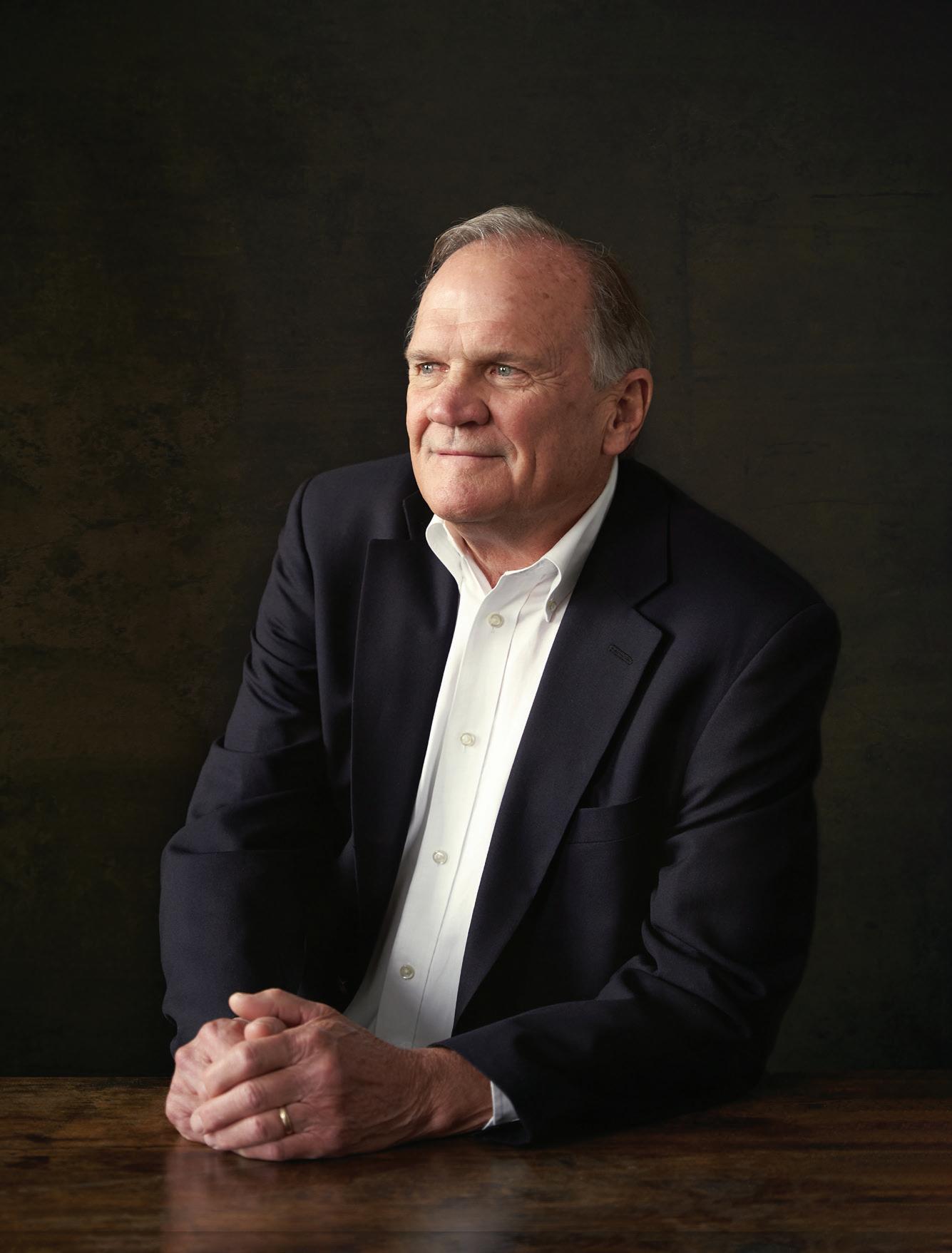
As a business you always have to be looking forward. Will you be taking on any other projects in the near future?
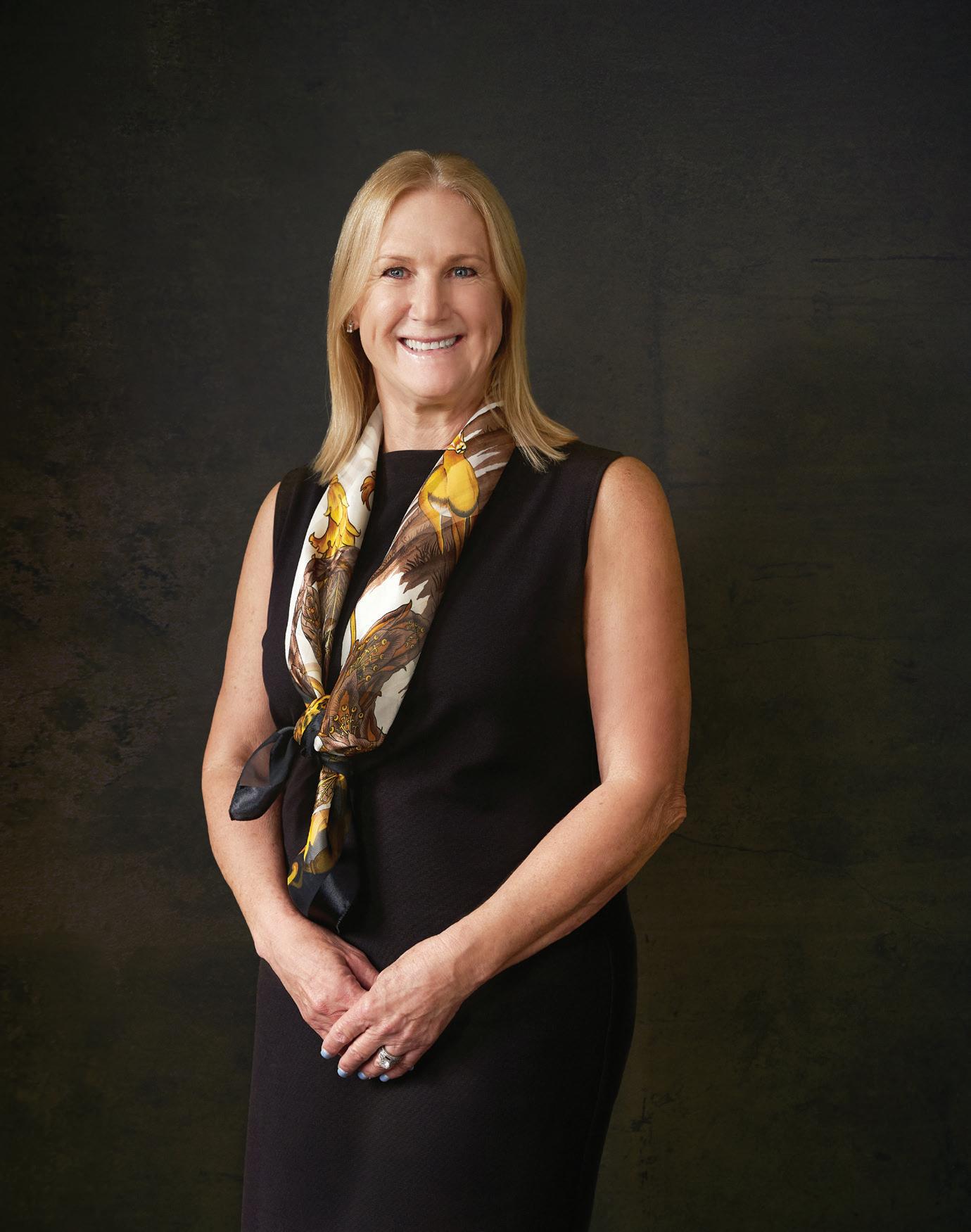
(laughing) We have enough to “say grace over” for now, as they say. I mean, this is a monumental undertaking, and one that has not been done on the Northshore, or this part of the state, in a long, long time. There are a lot of moving pieces to this and a lot that we’ve got to get done in this first phase so that we can have long-term success. It’s a piecemeal approach that will be many years in the making.☜
This is the only parish in the state where residential property taxes are greater than commercial property taxes. Every other parish in Louisiana has been welcoming in these types of uses, and they’re benefiting from it. St Tammany needs to catch up.
Crosby Development was founded in 1954 by John L. Crosby Sr. as a residential building company in New Orleans. In 1970, the company expanded into multifamily construction, which later led to a move into office commercial. The company has constructed over 1,000 residential units and more than 100,000 square feet of commercial office space, with notable projects including The Sanctuary in Mandeville and DeLimon Place in Metairie. The company is currently run by the second generation of Crosbys, which includes five sons and two daughters.


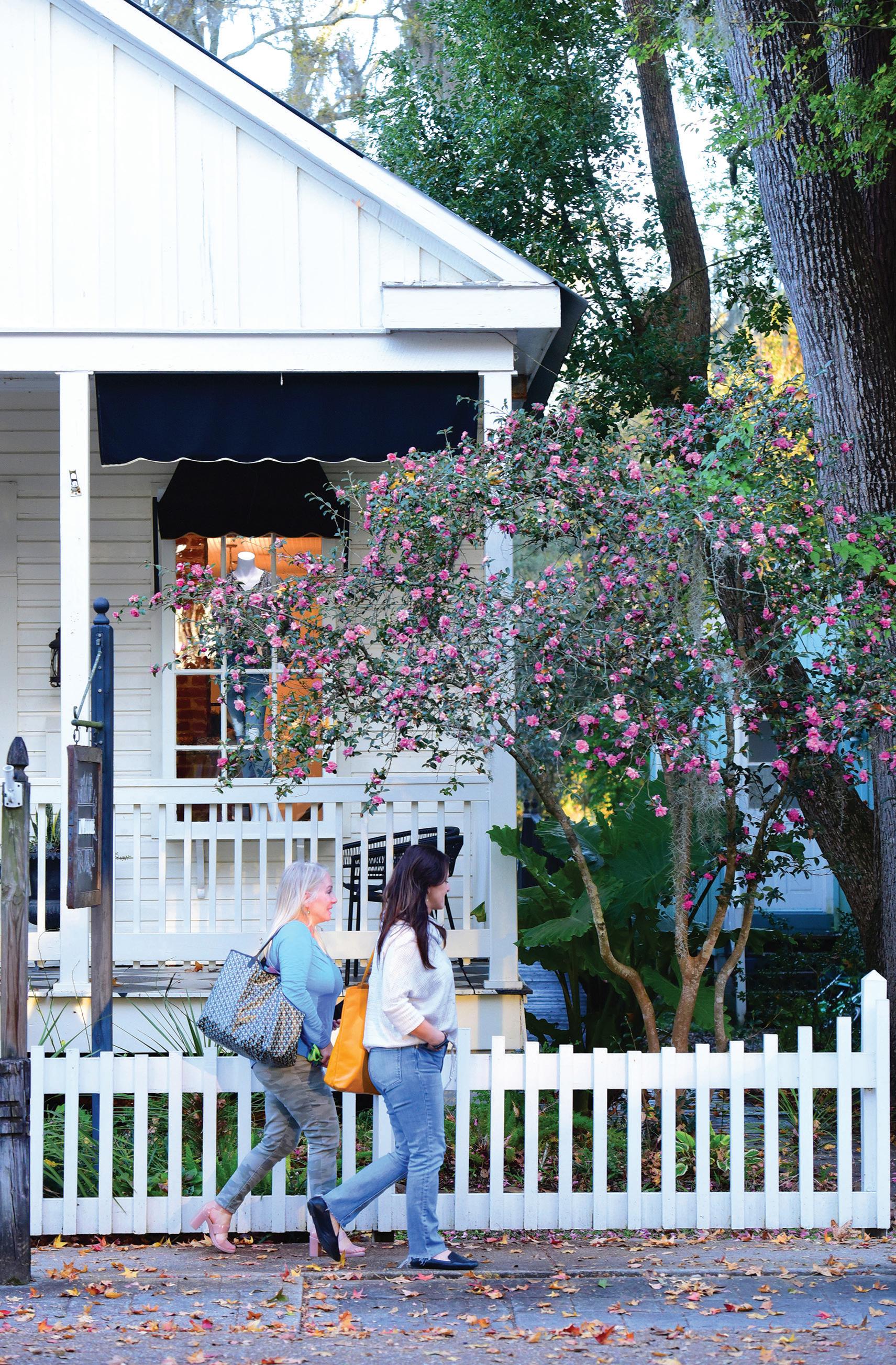
Before he became the mayor of Covington in 2019, Mark Johnson was asked what he would do to attract new businesses to the city’s downtown area. For many years, the idyllic Main Street was the place to go on the Northshore, with classic hotels serving mint juleps and white tablecloth dinners and old-school movie houses showing classic silent films along with the latest sci-fi blockbusters.

The softspoken, retired businessman was new to politics — his campaign for mayor was his first run for public office — but Johnson spent a lifetime working to help businesses succeed. For him, it was a no-brainer.
“My answer at that time was very simple,” Johnson said. “Make sure that the businesses that are here are successful.” Despite being a newcomer to the small town’s political scene, Johnson soundly defeated two longtime Covington political leaders, a clear sign that his messaging resonated with voters.
Johnson said his philosophy is that if you take care of existing businesses, you won’t have to go out and look for new ones. “If what’s here isn’t successful, no incentive that you offer will be enough,” Johnson said.
Part of his focus for Covington has been bringing in new investments to help renovate and expand some of the downtown’s historic buildings, such as the iconic Southern Hotel on North New Hampshire Street, and a $5 million renovation of the Star Theatre, a movie house built in 1942 that once sat up to 1,000 people before being split into a two-screen theater in the 1970s.
The Star has sat empty since Hurricane Katrina, but the new plans for the 10,000-square-foot building are ambitious and set to revive the once vibrant space. The vision is to create a four- to six-lane boutique bowling alley in the center, along with a rooftop lounge and multiple stages for small acoustic bands and entertainment.
All in all, downtown Covington is currently looking at more than $17 million in new investments, and a whole host of new businesses moving into the area. A former barbershop and law office is now home to TAVI, first Northshore restaurant from BGR Hospitality — formerly the Besh Restaurant Group — which offers an Israeli/Lebanese-inspired menu under chef Fariz Choumali, who formerly led the kitchen at Shaya.
There’s also The Greyhound, a gastropub cast as a “family-friendly tavern” from chefs Torre and David Solazzo, the couple behind Del Porto Ristorante, an Italian restaurant just up the street in downtown Covington, and Valencia, a Spanish restaurant that serves tapas and paella. There’s also The Dakota Restaurant, which serves American dishes “inspired by Southern flavors,” which just opened at the end of 2022 in downtown Covington.
For Johnson, these new players are a testament to the success of focusing on helping already existing businesses.
“We did not go out and solicit them,” Johnson said. “They are seeking space in Covington and that’s extremely gratifying.”
And it’s not just dining and sophisticated entertainment options that are opening up. The old Rouses supermarket on Park Place Drive is slated to be renovated for two new businesses: Urban Air Adventure Park and Goldfish Swim School, both designed for family fun.
Chris Masingill, CEO of St. Tammany Corporation, said the region welcomes the new ventures with open arms.
“Family entertainment and children’s education venues provide opportunities for St. Tammany’s growing population and young families across the region to safely enjoy the superior quality of life our community offers,” he said.
Lacey Osborne, president and CEO of the St. Tammany Chamber of Commerce, echoed Masingill’s sentiments about the new ventures, both of which are expected to open in November.
“Since St. Tammany has been called ‘family-ville,’ it will be most welcome,” Osborne said of Urban Air Adventure Park and Goldfish Swim School before adding, “As a grandmother, I can personally attest to that!”
Mayor Johnson’s business philosophy of “taking care of what’s already here first” has proved to be an effective one for Covington’s economic growth, especially in the city’s historic downtown area. But Covington’s success in the last few years really traces its roots back to the early 1990s, when some of the city’s citizens came together to focus on revitalizing the region, including starting “Keep Covington Beautiful,” a nonprofit dedicated to “involving all citizens in enhancing and preserving the beauty of Covington, Louisiana.”
Covington is in the middle of a renaissance.
Over the last few decades, Keep Covington Beautiful has performed activities such as collecting and recycling spare tires and reams of excess paper in homes and offices citywide; sweeping the Bogue Falaya River of litter; collecting trash from hot spots; keeping downtown planters lush with flowers; and helping the city or other groups with their projects, including the collection of hazardous materials and special cleanups.
Because of the group’s work, Covington has earned the designation as a “Tree City” by the National Arbor Day Foundation every year for the past 30 years. The organization works to meet core requirements by maintaining an active Tree Board and community tree ordinance; spending at least $2 per capita on urban forestry; and celebrating Arbor Day. This year, Keep Covington Beautiful celebrated Louisiana Arbor Day with a tree seedling giveaway at the Covington Farmers Market, handing out six-hundred black gum, pond cypress, possum haw, red bay, Shumard oak, and smooth sumac seedlings for free.
The Arbor Day giveaway serves as a nice metaphor: Growth takes time.
“I really think the seeds of what we’re enjoying today were planted by Keith Villere when he was mayor, and groups of people like Dan Robertson
who were just so civic-minded and could see the potential of Covington,” said Lisa Condrey Ward, an attorney, hotelier, real estate developer, historic preservationist and jack-of-alltrades behind projects like the renovation of the Southern Hotel. “They’re the ones that set up the Downtown Development District, the historic commission and just took steps to lay the groundwork for the quality of life that we have. And you know, all that takes time.”
Ward said it’s also the people who live in Covington who “make it the extraordinary place that it is.”
“So many people have lived here for so long that you have this continuity of institutional knowledge and history,” Ward said. “And people are really passionate about that, which is great.”
That passion and support from the community made it easier for Ward and her partners to take on renovations of beloved and historic icons like the Southern Hotel. That includes support from historic tax credits. Ward said the renovations couldn’t have been done without them.
And like the trees that grew from seeds planted in the ’90s, the projects took time and commitment.
“We did the renovation from 2012 until we opened in June of 2014,” Ward said. “And then in 2018, also with historic tax credits, we bought the old Post

Office building that used to be part of the hotel property back in the early 1900s ... and we bought it and also renovated it to make six more suites.”
Ward and her partners are also building new construction projects to add new condos and additional retail space across the street from the hotel. The project calls for the current six 1940s-era storefronts along North New Hampshire between Boston and Gibson streets to be torn down and a new 43,000-square-foot Mission-style building erected on the land.
The new site will be called the “Summer House,” and the building will have retail space and 25 parking spaces on the first level, 24 hotel rooms on the second, and four condominiums and a full-service spa on the third floor. The project is expected to cost up to $11 million.
Ward said that with all the current commercial viability that’s happening in Covington, more and more people want to live downtown so they can easily access and walk to everything and be in the heart of the action. “It really is the classic village or small town model,” Ward said. “We’re fortunate because so many towns of this size in other places struggle. But right now — knock on wood — we seem to be in a bit of a renaissance.”
Mayor Mark Johnson said he has similar impressions about a renaissance happening in town. He

pointed to the permit requests his office sees for residential, residential renovation, additions, commercial renovations, commercial moving and other projects that need approval from the city. Johnson said that normally they see in the low 200s for permit requests each month, but in the last two months, his office has received more than 250 each month — a sign of continued growth and investments in future projects, some of which are years down the road.
For Johnson, it’s all about the climate, the ambiance, which he likened to the “old days of Mayberry.”
“There’s a relaxed atmosphere in downtown Covington, where you can park your car and you can walk from one space to another one place to another place,” he said. “You can go shopping, you can conduct your legal business, your accounting, go into a nice restaurant and never once feel uncomfortable.” Johnson said they’ve recently seen audience participation at events put on downtown as much as 50% higher than in previous years.
When asked what he wished more people knew about Covington, Johnson said, “I guess the fact that we’d like to keep how wonderful we are a secret.”
After having the fact that he was telling this to a journalist working on a magazine feature focused on his city pointed out to him, Johnson laughed and said
that he could see how that would come off as a funny thing to put in an article. “It’s just that we do recognize that we are one of the coolest cities in America,” Johnson said. “We have centuries of history, incredible cuisine, and wonderful live music — we have over 100 free musical acts a year.”
Lisa Condrey Ward also laughed at the idea of Covington’s ongoing renaissance being little known or classified information.
“Well, it’s definitely not a secret anymore,” she said. “I get several calls a month from people with really great, really cute store ideas, restaurant ideas, and they’re just having a hard time finding a spot downtown. People are circling that little area because I think they recognize the walkability of it, and with all the residential building going on in the city, it’s just a great spot to be in.”

Ward said the desire for bigger entertainment venues is clear evidence that Covington is no longer a well-kept secret, but an event destination. It’s also why she and her partners purchased the old Vintage Court event space located about 3 miles from the Southern Hotel. They plan to rename it the “Greenwood” and use it as a larger venue option in the area.

“It’s got incredible outdoor space. It’s beautiful. It has two indoor ballrooms,” Ward said. “So it could host corporate events, it could host
weddings — anything from 50 people to probably upwards of 800 people.”
While there are many recent wins, for Ward, there is still plenty of work to be done. But at the same time, there are also plenty of opportunities.
She said there are a lot of underutilized buildings in the area that could be revamped or repurposed to support the downtown’s expansion. A prime example is the courthouse in the town square, which Ward said has sat mostly unused — except as the occasional hurricane or emergency center — and is an eyesore that could be transformed into a public space that is accessible to all and remains true to the historic architecture and character of the downtown area.
So, while the groundwork for the current renaissance happening in downtown Covington can trace its lineage back to civic engagement in the 1990s, it takes continual watering and nurturing to keep it alive. Preservationists like Ward and leaders like Johnson, who are committed to the city’s continued success and growth are the latest in a long line of civic leaders in Covington who are working to ensure a bright and blooming future.
And if the secret isn’t out already, it certainly is now. T


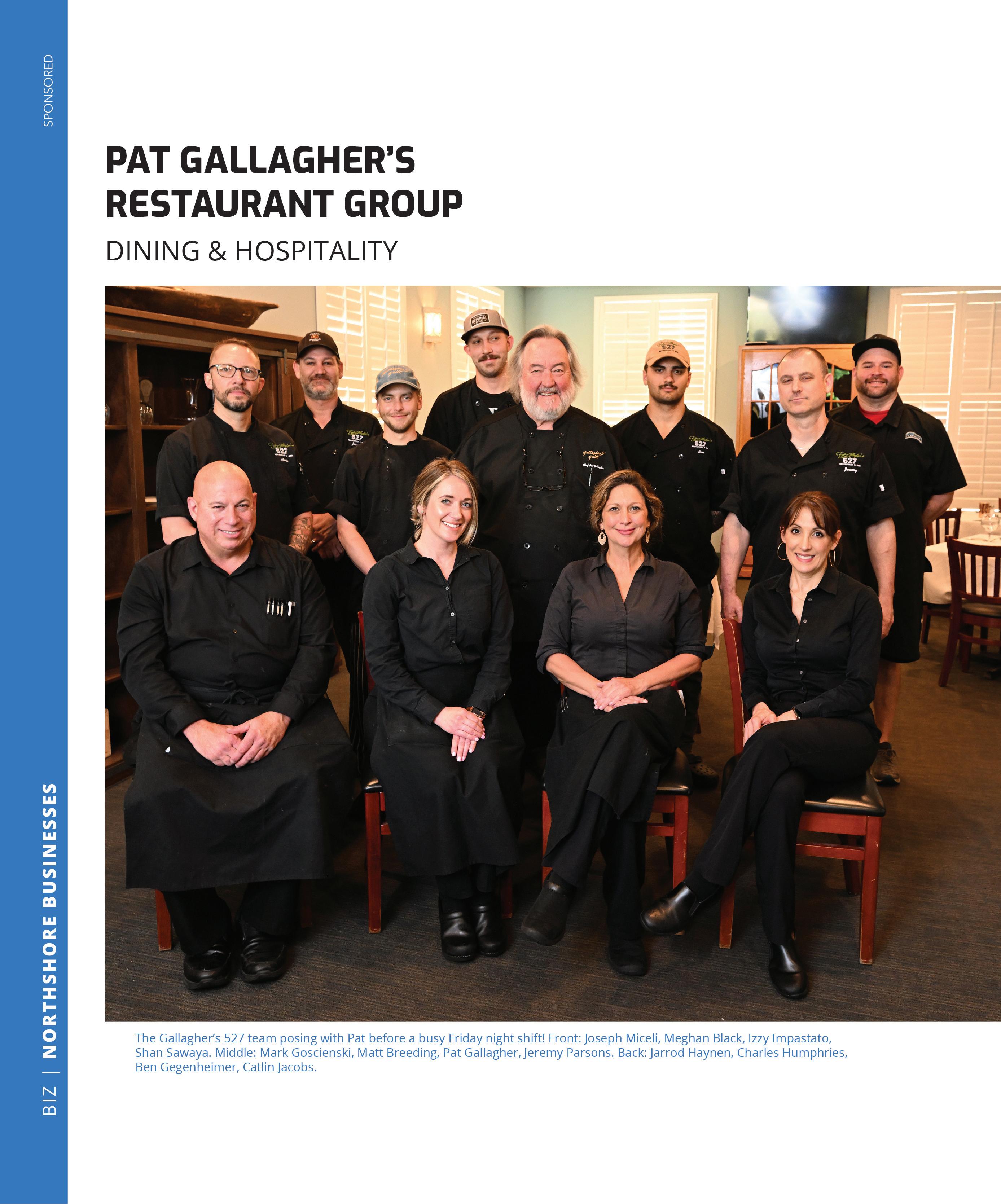


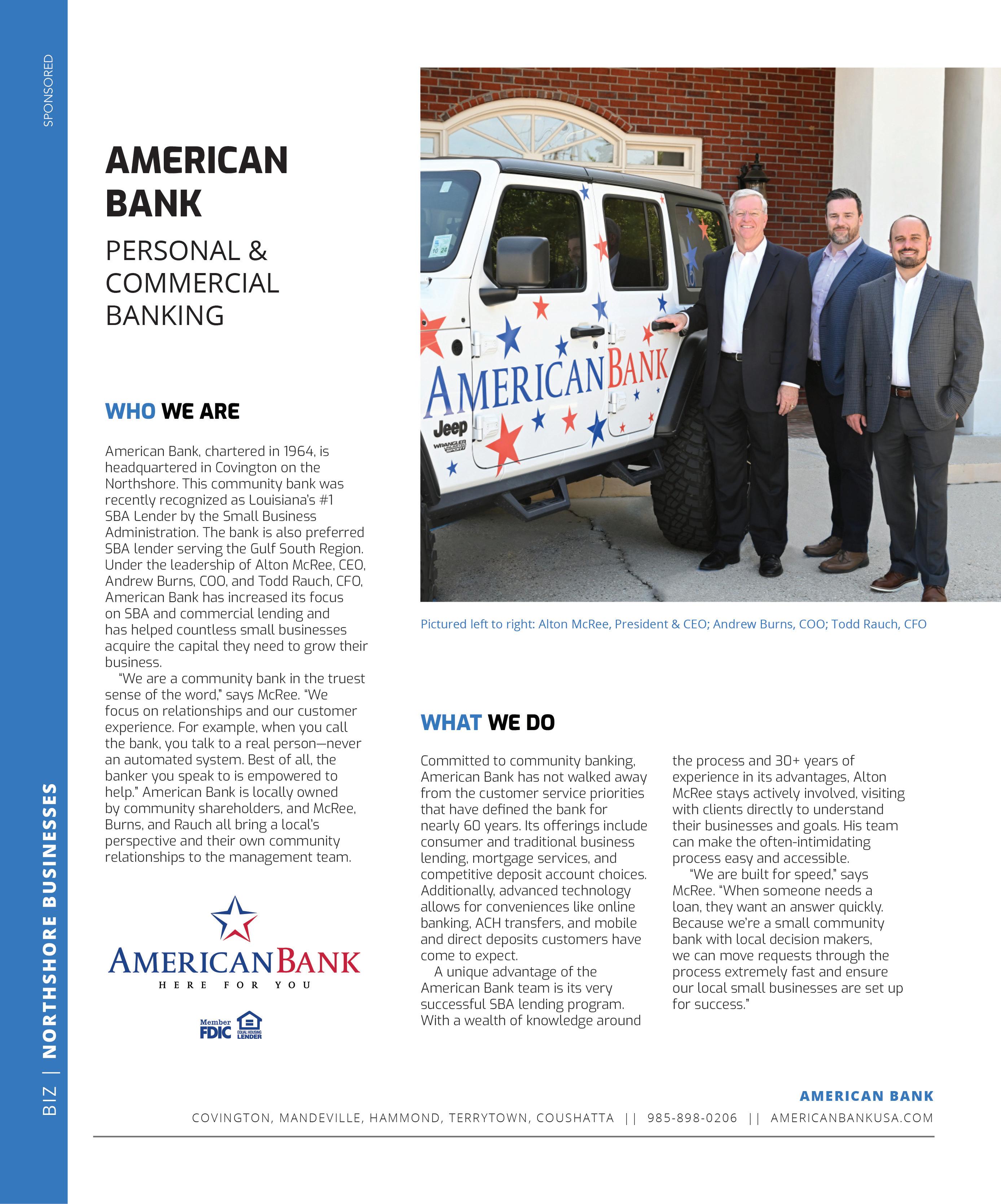



hubinternational.com

gulfbank.com
At HUB International, Senior Vice President Annette Dowdle thrives in helping businesses implement innovative benefit programs for recruiting and retaining best-in-class employees. Committed to simplifying the complicated world of employee benefits, she champions a modern approach to employee-centric benefits.
Annette and her team help organizations build the employee benefits experience that sets them apart. How does it work? First, they take an in-depth look at your current plans and policies. Next, they use data and analytics to better understand your workforce, providing key insights to employees’ unmet needs. Then, Annette and her team help design a better benefits experience.
This approach allows businesses to create an easy-to-manage, highly personalized, and affordable benefits program that elevates the quality of the employee experience, ultimately retaining and attracting the most sought after employees in the marketplace.
You can reach Annette at annette.dowdle@ hubinternational.com or 504-491-5575.
With over $3.1 billion in assets, Louisiana-based Gulf Coast Bank & Trust Company serves its business and personal banking clients through its bank branches, loan production offices, trust and investment offices and business credit offices.
Gulf Coast Bank & Trust Company has more than 850 employees across 20 branch locations in Southeast Louisiana and more than 49 total locations in 29 other states. Gulf Coast Bank & Trust Company branch offices sprawl out into Orleans, Jefferson, St. Bernard, St. Tammany, Tangipahoa, and East Baton Rouge cities.

As a community bank, Gulf Coast Bank & Trust Company commits itself to nonprofit organizations in Southeast Louisiana through sponsorships and charitable giving. Each year, Gulf Coast Bank & Trust Company hosts a fundraising event, Auctions in August, for local and national organizations, schools, churches, and community groups. Since its inception in 2008, Auctions in August has raised over $1,397,000.
Visit gulfbank.com for more resources.
From accounting hassles to workprocess mismanagement, finding an answer to your problems is pertinent to your company’s success and longevity. Whether it’s an insightful consultation on IT solutions or recommendations to streamline your operations, New Orleans B2B service providers can ease pain points in your company. New Orleans businesses are better when they work together.
Advidly.com

504-875-3908
JEDCO.org


866-604-2006
Investarbank.com
Hey there, business owners! We all know how tough it can be to stand out and attract new customers, but guess what? Advidly is here to save the day!
We’re not your average digital marketing agency – we’re a full-service team of content creators & entertainers dedicated to helping you crush the competition! No matter if you’re a small business or a big-time corporation, we’ve got the strategic minds and innovative skills to guide you from planning to launch and beyond.
Our mission? To tell YOUR unique story and help you build a strong brand identity that your audience can’t resist! With killer video advertising, expert social media management, and online platform domination, we’ll get your brand the attention it deserves.
So, if you’re ready to level up and achieve your growth goals, don’t wait – visit us at Advidly. com to get started today! Your new marketing team is waiting!
As an internationally accredited economic development organization, Jefferson Parish Economic Development Commission (JEDCO) is a leader in building a resilient, equitable, diverse, and competitive economy for Southeast Louisiana.

JEDCO drives the retention and creation of quality jobs, entrepreneurship, innovation, and investment in Jefferson Parish by providing a mix of resources, support, and connection to partners. JEDCO also attracts new business to the community and supports existing businesses through a variety of services, including small business financing, tax incentive guidance, site selection, and Parish interface.
Visit JEDCO.org or call 504-875-3908 to learn more.
Whether you’re expanding your business into new locations, building your assets, or working to increase cash flow, Investar Bank’s full suite of business banking tools and experienced staff can help you choose the best options for saving, growing, and keeping your business on track.
Our new Star Treasury Advantage business bundle combines a competitive Business Checking product with Treasury Management Services providing small to mid-sized companies with the tools and resources to run more efficiently and cost-effectively. Combined with our secure and robust online banking platform and mobile app, you can run your business from just about anywhere at any time.
Our mission is founded on building relationships that create value and opportunities for our customers and their communities. Visit one of our four locations in the Greater New Orleans area, and let’s grow together!
For more information on our products and services, visit Investarbank.com or call 866-604-2006.
BiosITGroup.com
As a business leader, you know that managing technology can be a headache, especially when you have a growing business to run. At BIOS Technologies, we understand that the disruptions caused by IT can take valuable time away from focusing on what really matters.
For over 20 years, we’ve provided premium IT solutions to businesses in Greater New Orleans, specializing in Cyber Security, Remote Work, and Disaster Recovery. Our team of experts will help reduce disruptions, improve uptime, and protect your business from unnecessary risks.
Whether you’re a small team or a large organization, our goal is to provide you with the right tools, processes, and team members to keep your business moving forward.
Make IT your strategic advantage and schedule a free consultation with us today at BiosITGroup.com.



 BY MELANIE WARNER SPENCER
PHOTOS BY SARA ESSEX BRADLEY
BY MELANIE WARNER SPENCER
PHOTOS BY SARA ESSEX BRADLEY
For years, the sizable and striking historic Fine Arts Theater at 1733 Constantinople St. sat vacant. It was designed in the early 1900s by prominent local architect Moise Goldstein — whose other notable projects include Temple Sinai and the Moisant Airport terminal, which became Louis Armstrong International Airport — in the Renaissance Revival style as part of a renovation of the former, less grand Pastime Theater, according to a 2022 Nola.com report. Over the years, the building has also served as the Booker T., a theater for Black patrons, a church, multiuse arts center, banquet hall, storage for nearby Martin Wine Cellar and “it was rented by the art department for the TV movie ‘Kingfish,’ starring John Goodman as Huey P. Long,” according to the report.
In 2020, the theater underwent a major restoration and was transformed into the headquarters of DEVENEY marketing agency, housed in the two-story theater portion of the building. It’s also home to two popular neighborhood tenants, Zee’s Pizzeria and Lucy Boone Ice Cream. Biz talked with DEVENEY president John Deveney and partners Carrie Pavlick and Melissa Lee to learn more about the company’s new space, its history and what’s next for the agency.
What were your goals for the design? Carrie Pavlick: To create a space where our team members could feel safe, comfortable and excited about coming back. We worked from home for a year during the COVID shutdown. We took what we learned about outfitting an office in a COVID world and incorporated those learnings into the office.
What was the biggest design challenge? Pavlick: As [an] historic property, we took great care in winning the approval of preservationists and regulatory agencies. The façade has been lovingly restored — including every door and window opening, the balconies on each side of the building, and the box office.
What is the standout feature of the design? Pavlick: Its history as a theater location goes back at least to 1900, so it’s impossible to just
DEVENEY worked with the architectural team at CICADA in the renovation and redesign of the early 1900s-era historic Fine Arts Theater at 1733 Constantinople St.

pick out one standout feature. The monolithic projection booth retains its commanding view — now of the atrium that opens DEVENEY’s first floor to the vaulted ceilings above the second floor. As was tradition in the age of flammable nitrate film, they built the projection booth like a bunker, with inch-thick concrete walls intended to contain any fires to protect the audience and building. Having endured a century intact, the booth has been described as a tiny museum, with its antique projectors in place and reels for film littering the floor; elsewhere in the grand old building we found and will preserve what may be one of the first spotlights in New Orleans.
How do you set yourselves apart from others doing similar work?
John Deveney: Our people ... Much of our team has earned the highest accreditations within the industry. Many have reached the very top leadership roles nationally and within the industry and
profession, and elected to share their expertise through DEVENEY. It is uncommon for agency teams to be comprised predominately of senior practitioners. And our clients love it! ... Our work with leaders such as Audubon Nature Institute and our new workspace reflect our priority of leaving the world better than we found it. Part of our culture and history is restoring deteriorated historic property — starting in the Garden District 28 years ago, then the Faubourg Marigny, then Magazine Street — and contributing to the economic strength of its neighborhood. DEVENEY is proud to contribute to the incredible renaissance of the Baronne Street Commercial District.
How do you promote a positive work atmosphere for the staff?
Lee: We trust our team to get the job done for our clients whenever they need us. We may work late nights, early mornings, weekends or holidays. By being flexible, we give our clients our best and help our team members balance
their jobs with the rest of their lives. We offer hybrid in-office and remote work policies that support our collaborative team atmosphere. Our ‘culture club’ brings Team DEVENEY fun both in and out of the office — a celebratory meal to mark a big win, a stroll around the neighborhood for an ice cream treat, or organized team outings to enjoy time away from work and explore together ... Whether cheering for a teammate performing on stage or marching in a parade, Team DEVENEY shows up for each other. When planning our new office space, we talked extensively about what would bring joy to our work. Plenty of natural light, a variety of rooms for meetings, and a beautiful historic building as home for our offices were on the group’s wish list. Little things matter in a workplace: favorite beverages, snacks and the ability to personalize our workspaces give everyone a feeling of ‘home.’ away from home’ and boosts morale. DEVENEY offices are decisively pet friendly, and we love
Traditional meeting spaces and home-inspired nooks — as well as natural light and perks like beverages and snacks — were among the features on employee wish lists that were granted in the new space.

“As [an] historic property, we took great care in winning the approval of preservationists and regulatory agencies,” said DEVENEY Partner Carrie Pavlick. “The façade has been lovingly restored — including every door and window opening, the balconies on each side of the building, and the box office.”

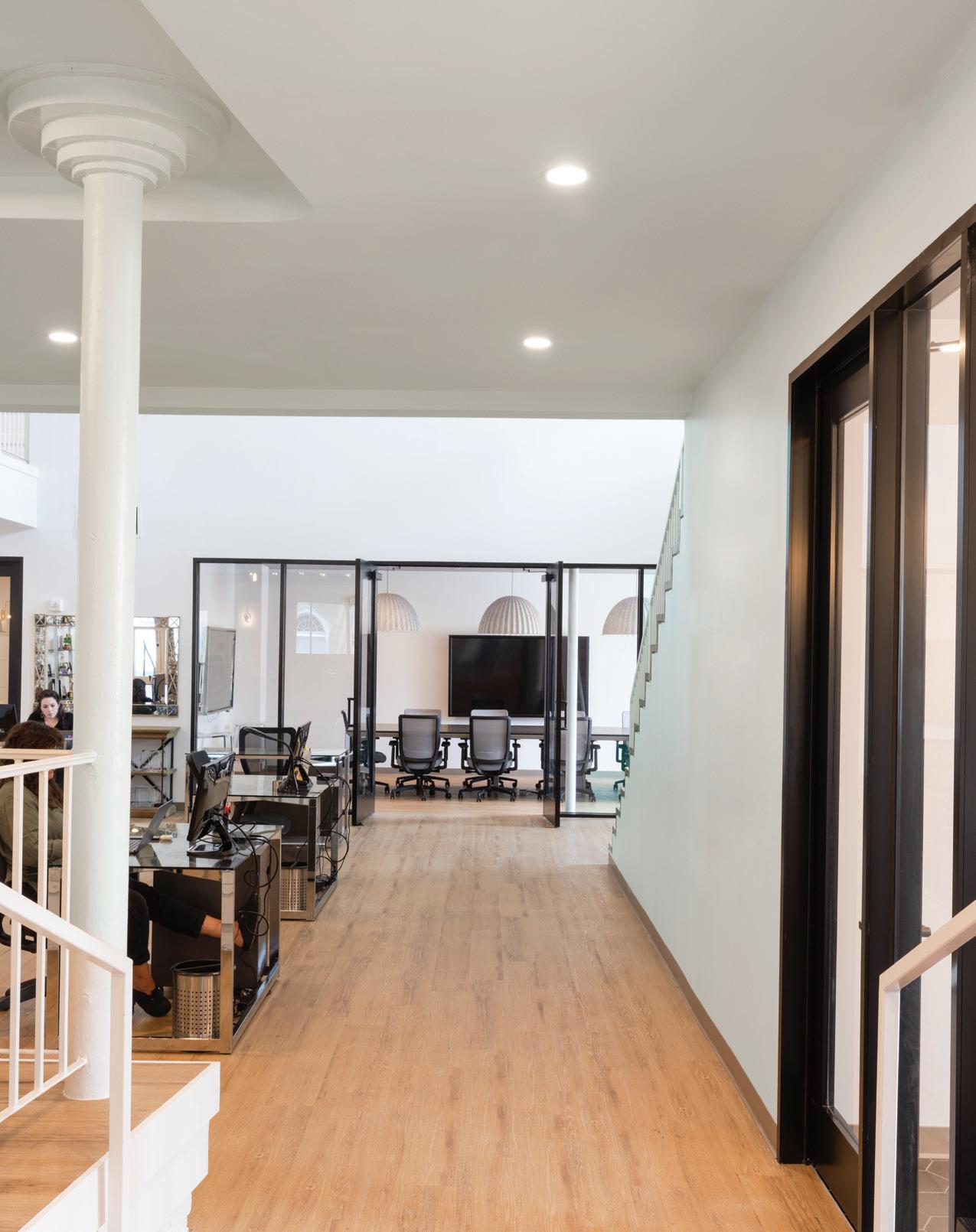
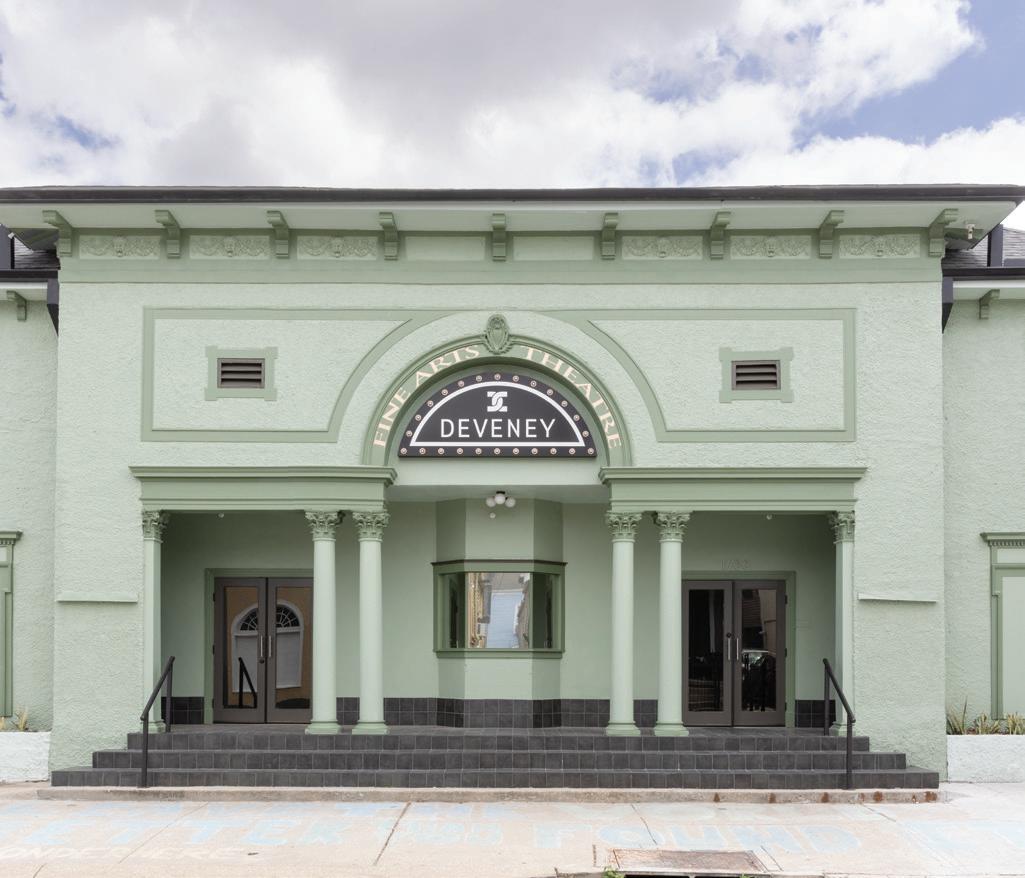
having our furry family members nearby to dispense licks and cuddles during the day. By listening to and trusting each other, we build team strength, develop a workplace that fosters creativity and collaboration, and give us all a sense of pride in being part of Team DEVENEY.
What are your biggest challenges?
Deveney: Change is difficult for everyone. And we have been through so much upheaval in every facet of living. Reinventing how we operate after nearly three decades in business was a challenge. We wanted to be considerate and responsive to what was best for our team members and enhance our ability to continue to deliver the results that have earned us recognition more than four times as one of the Top Five agencies in the country by authorities such as PRNews and PR Week. New approaches, like our generous remote work policy and financial incentives, demonstrate our priority on our employees, but the office space made it real. We modified the design and technology to enhance our inspiring workspaces with post-COVID sensibilities, including keyless and touchless entry, a single and separate path entrance and exit. Updates brought large amounts of accessible outdoor space; increased natural light; hard surfaces in the kitchen area for easy cleaning; and increased distance between workstations and offices. Most enjoyably, our pet-friendly headquarters includes our first Chief Barketing Officer. Check him out on Instagram: @griffinthegoldenirish.
What goals are you looking to meet in the next 12 months?
Deveney: In the year ahead, we focus on growth. T
FROM

New Orleans has long had a love affair with coffee, embracing both its rich culinary qualities, as well as the financial and business opportunities of importing and roasting the beans to destinations across the U.S.
According to a 2017 Biz New Orleans report, “More than 1.29 million tons of coffee were imported through the Port of New Orleans between 2011-15,” with millions of square feet of storage, plus roasting facilities across the area. The city is even set to host an inaugural two-day “Coffee Festival” this September, which will welcome industry professionals and coffee experts from around the world.


So, with all the caffeinated hype surrounding the Crescent City, how can everyday New Orleans coffee drinkers elevate their own at-home cup of joe? A new coffee destination on Magazine Street answers that question, giving coffee lovers and coffee explorers a new reason to embrace the bean, and make their morning cup more than just a daily habit.
On March 1, Current Crop Roasting Shop celebrated its grand opening at 3931 Magazine Street — right in between acclaimed restaurants Shaya and Lilette. The brainchild of owner John Puckett, the shop aims to offer “a hands-on learning environment for new and experienced roasters to hone their craft.
New coffee shop on Magazine Street offers bean lovers a place to roast their ownCurrent Crop Roasting Shop on Magazine Street offers a selection of green coffee beans from around the world, as well as roasting classes, equipment and tastings.
“New Orleans coffee drinkers are accustomed to dark-roasted coffee,” said Puckett. “We have enjoyed showing them the flavors and tastes they can experience from other roast levels.”
Instead of already roasted beans, Current Crop Roasting Shop offers customers a selection of green coffee beans — defined as the raw seeds of coffee cherries that have been processed but not yet roasted — from Africa, Asia, North, South and Central America, the Caribbean and Indonesia. Beans range widely in price due to scarcity and quality and can be purchased in sizes ranging from a half-pound, sample-size bag up to 5-pound bags.

In an even greater departure from traditional coffee shops, Current Crop also offers roasting classes, equipment and events. Classes cover all aspects of coffee bean roasting for all levels of experience, are kept small (limited to eight people) and cost $30 per session.
For those looking to hone their craft, the shop offers roasting equipment on site, along with everything a home roaster needs to get started.
For Puckett, getting started in the coffee biz stemmed from his own experience in roasting coffee at home.
“In 2017, I purchased Coffee Bean Corral, an e-commerce green coffee supply and homeroasting equipment business. I quickly learned that home roasted coffee is a niche market, but I had no idea how big the specialty coffee market is. I’ve learned to appreciate the quality and numerous varieties of specialty coffee.”
For Puckett and his staff of five full-time employees, developing a relationship with coffee farmers and the beans they grow is an essential part of the process of getting the best coffee to their consumers and in teaching the various aspects of the final coffee product.
“We have up to 80 various coffee beans from numerous growing regions available in our ‘Bean Library,’” he said. “These coffee beans are sourced from as many as 38 countries through direct relationships with farmers and specialty traders. The relationships at every step of the supply chain from the farmer, producer, trader, importer, exporter, buyer and supplier are very important. Each step provides unique knowledge that traces back to the farm itself. As a matter of fact, one of our farmers from Guatemala visited the store last week to cup (taste) coffees with us from this year’s crop.”
Like most agricultural products, coffee beans have a limited shelf life, so Current Crop keeps its supply stocked with fresh imports throughout the year.
“Each individual country has its own harvest season, so beans arrive at various times throughout the year,” said Puckett. “Generally, green coffee
has around 15 months of freshness, give or take a couple of months. It depends on how long it rests at origin before it ships out. If it is given time to rest, its freshness can last longer.”
Two Current Crop team members, Catherine Mansell, “Certified Q-Grader” and director of products and programs, and store manager Ezra Remer lead classes and answer the many questions that customers and coffee-curious passersby may have.
“People are surprised at how easy and quick roasting a batch a coffee is,” said Puckett. “Numerous local customers have experimented with different roast levels with the same bean and found new appreciations and enjoyable flavors. Tourists come in wanting to know if we have chicory to add to their coffee back home. And yes,
we do have ground roasted chicory for those that want to experience true New Orleans flavor.”
In addition to introductory classes on home roasting and cupping (tasting) as well as custom private classes, Current Crop is planning to host classes focused on New Orleans’ rich coffee history.
“Starting this summer 2023, we will be offering new classes including an intermediate roasting class, intermediate cupping class, coffee cocktails and coffee and dessert pairing classes, with many more to come. We will present industry experts, farmers and other members of the supply chain to teach classes specific to their areas of expertise. We also look forward to hosting garden clubs, book clubs, corporate events, and working with hotels for tourist events.” T
According to a 2023 report by Statista “In terms of liquid beverage equivalents, coffee is among the most consumed beverages worldwide with roughly 42.6 liters consumed per person per year (12.6 liters of roast coffee and 30 liters of instant coffee).” And goes on to say, “Revenue in the coffee segment amounts to $95.58 billion in 2023. The market is expected to grow annually by 3.51% (CAGR 2023-2025).”

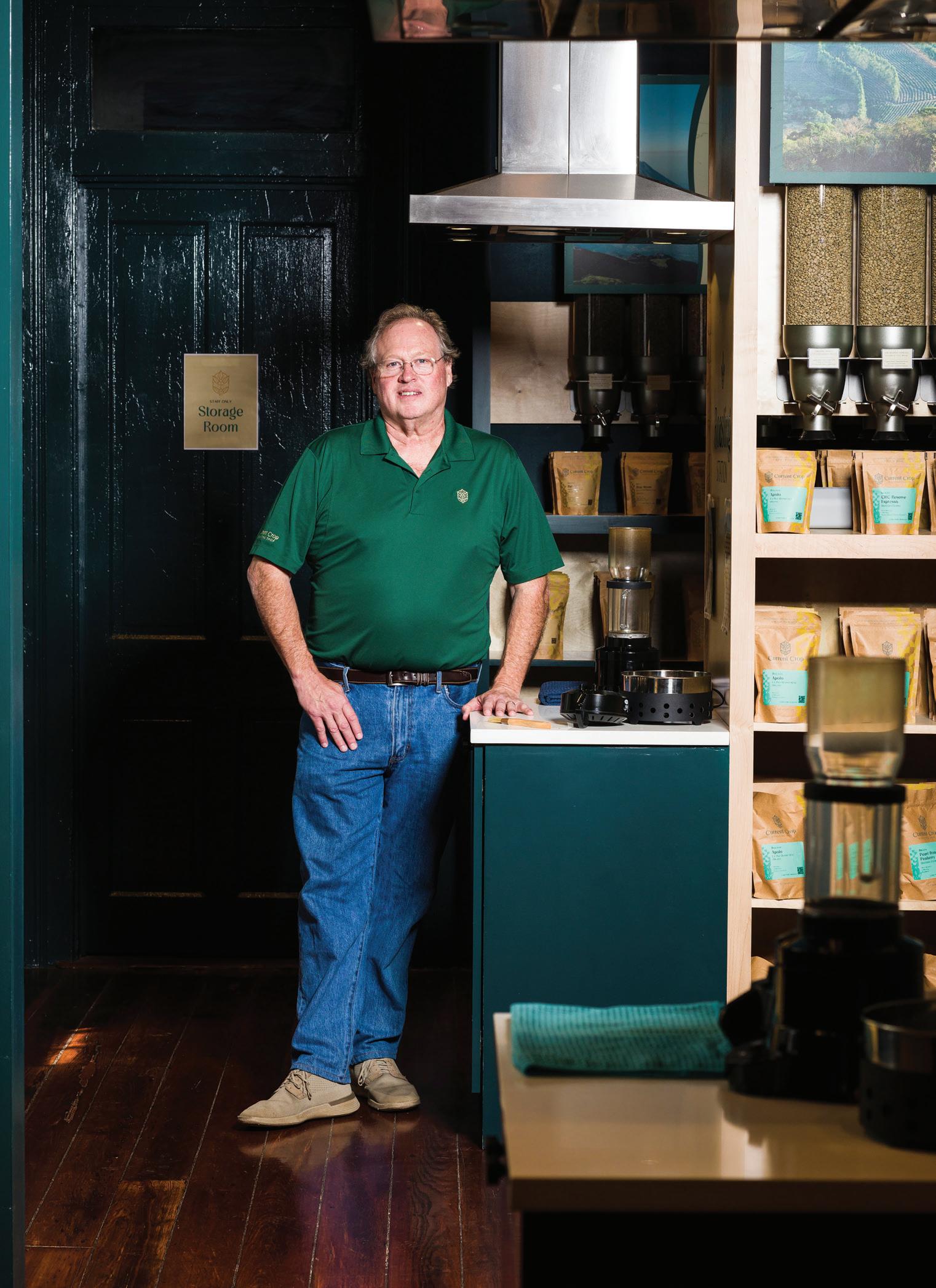
According to the Louisiana State Museum: “In the 19th century, the port of New Orleans grew from a colonial supply depot into the second largest port in the country and the fourth largest in the world during the 1840s. Sometime during the eighteenth century, New Orleans received its first shipments of green coffee from Cuba and other Caribbean Islands. As the city grew and commerce expanded, more coffee arrived from the Caribbean and South America until the port had become the second largest importer of coffee in the United States after New York by the 1840s. Today, New Orleans is the number one coffee port in the country. Around 241,000 tons of green coffee or 27.8 percent of the coffee that entered the United States in 1995 came into New Orleans. Beans are shipped here in large containers from thirty-one coffee-producing countries. This coffee is shipped out to large bulk roasters and smaller specialty roasters around the world.”
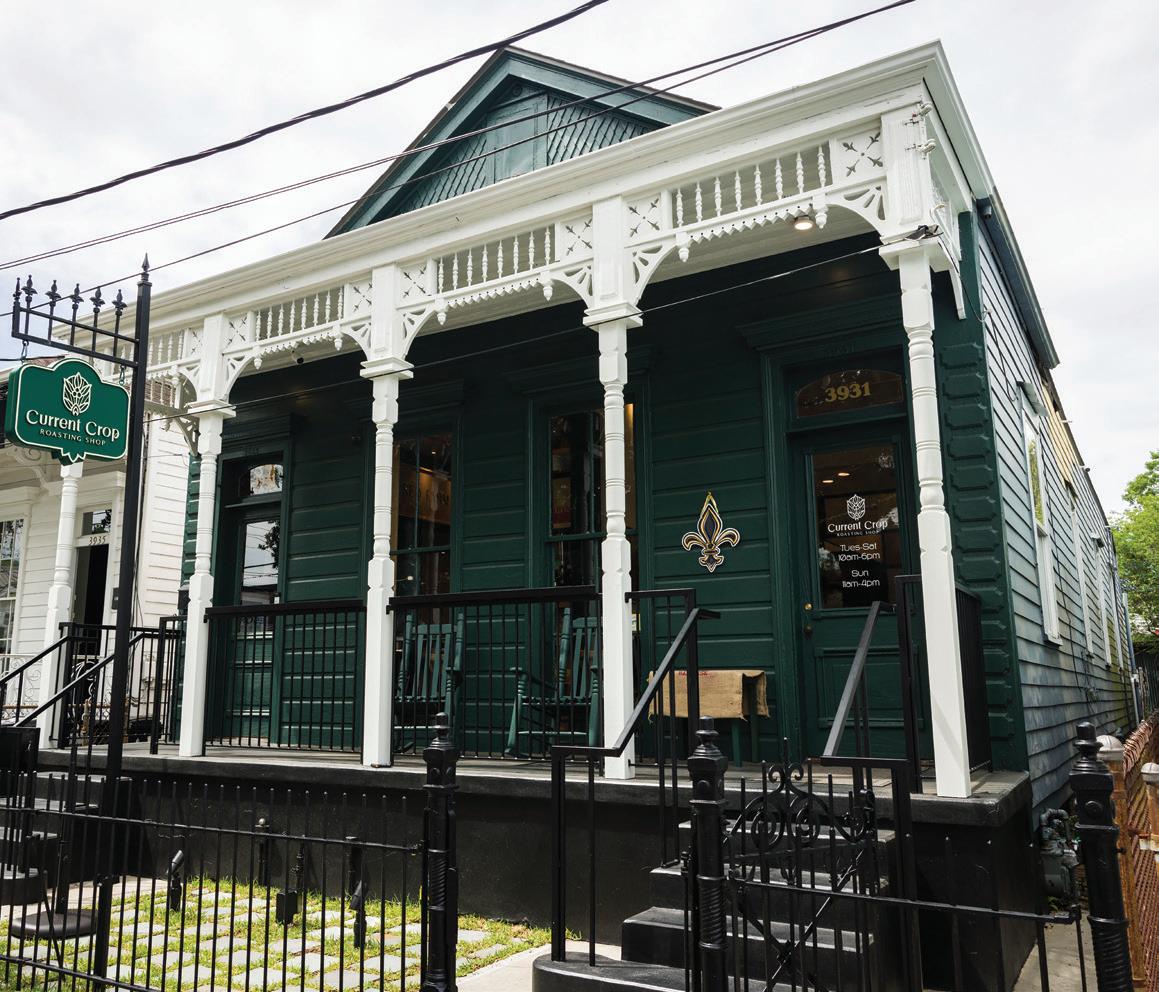
“If you come in here two or three times, the people behind the counter are going to know what you drink,” Ergen noted.
Consistency in his products is due to the long-term relationships Ergen has established with most of his suppliers.
“We’ve been using the same coffee roasters since the beginning,” he said, “and the same chocolate, the same bakers.”
Some things have changed, however. Forced to cope with various challenges — the pandemic being the most recent — Ergen began thinking outside the bean.
“We limited our hours, but we never closed during COVID,” Ergen recounted. “We kept all our staff by mixing shifts. We sold toilet paper to our customers because we could get it from our suppliers, even when there wasn’t any in the grocery stores. Our customers were really loyal to us, and we tried to help them.”
Facing the universal staffing shortages plaguing the restaurant industry, Ergen said he’s relied mostly on word of mouth to fill positions. The majority of the shop’s 10-person staff are students who tell their friends about job openings when they occur.
On the plus side, Ergen noted that many of his employees are in nursing or medical school.
“I won’t have any health care issues when I retire,” he said with a laugh.
Ergen tackles rising costs in part by doing as much of the maintenance himself, from fixing equipment to cleaning clogged pipes.
Consistency and innovation might seem like opposing forces, but this combination is the secret to the success of The Bean Gallery, a popular neighborhood coffee shop located at 637 North Carrollton Avenue in Mid-City.
On the consistency side, the business remains owned and operated by Emre Ergen, who opened it in March 2007.
“We were one of the first businesses to open after Katrina,” he recalled. “Now 80% of our business comes from regular customers.
Originally from Turkey, Ergen came to the University of New Orleans to get his master’s degree in civil engineering. However, his brother was the manager of Fellini’s — just down Carrollton Avenue where Blue Oak BBQ is today — and when the former City Perk building came up for sale, the brothers decided to seize the opportunity.
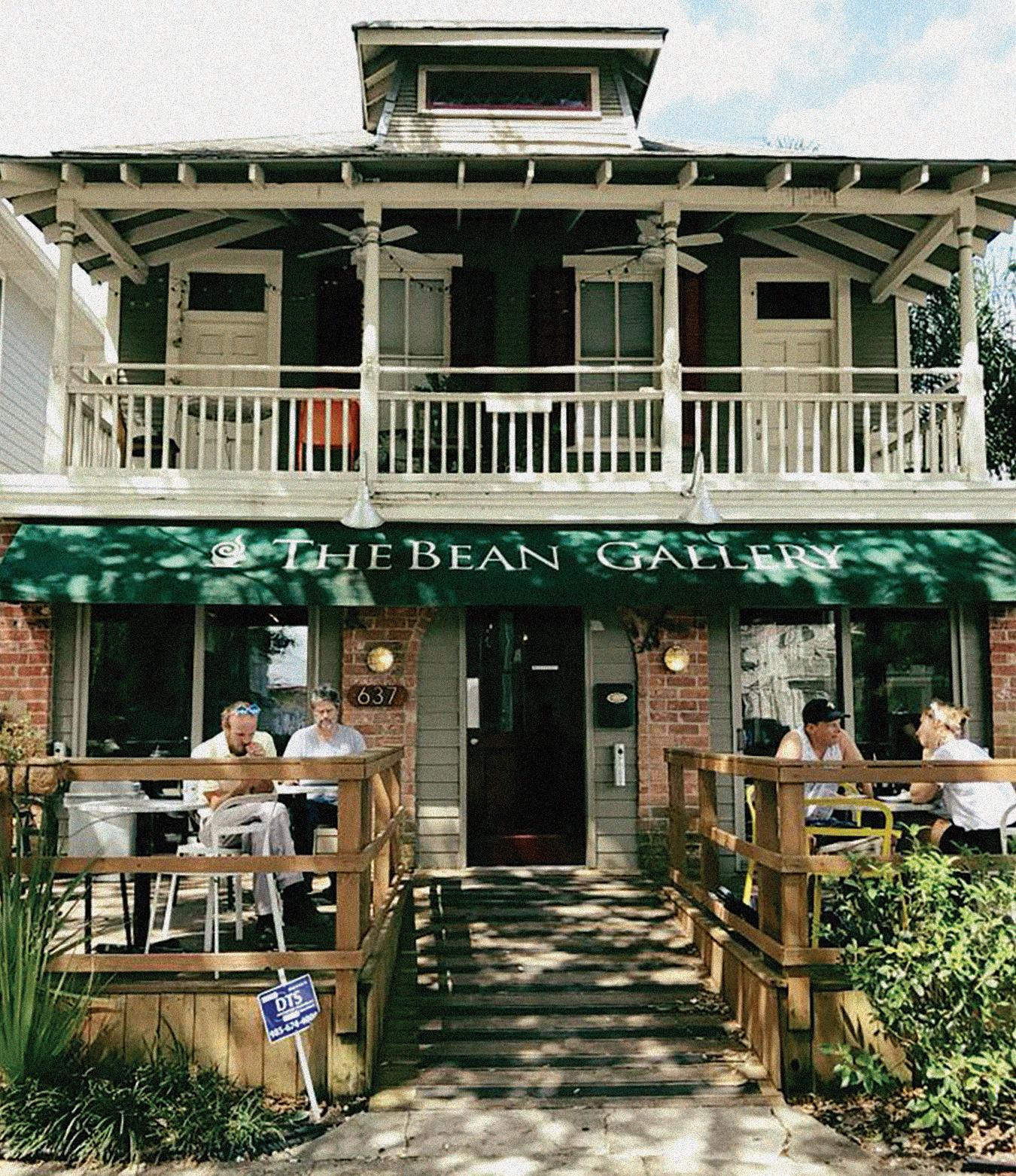
“I find myself doing something completely different than what I planned,” said Ergen. “It’s more work, but I have more fun working.”
This genial attitude is reflected in the staff and the casual atmosphere of the Bean Gallery. In addition to coffee and pastries, the menu includes made-to-order sandwiches and paninis, comfort food in a comfortable setting. The steady stream of local customers proves the value of Ergen’s approach.T
BY KEITH TWITCHELLSixteen years in business and counting, The Bean Gallery remains a Mid-City favorite.PHOTO COURTESY THE BEAN GALLERY
The New Orleans 500, an annual publication from Biz New Orleans magazine, profiles the business leaders who are driving the greater New Orleans economy today and making decisions that will shape the region’s future. The book is overflowing with details about regional CEOs, presidents, managing partners, entrepreneurs and other executives who are as devoted to their professions as they are to civic affairs. It’s a diverse group that includes fourth- and fifth-generation owners of family businesses as well as young, social media-savvy entrepreneurs building their brands one like or follow at a time.

This restaurant industry veteran opened his first spot in 1973 and has since started multiple iconic dining establishments, including Pat’s Rest Awhile, Gallagher’s on Front Street, 527 Restaurant and Bar, and Gallagher’s Grill. Over his long career, Gallagher has also served as executive chef at many establishments, including the original Ruth’s Chris Steak House, and is a veteran vendor at the New Orleans Jazz and Heritage Festival.

Education: University of Louisiana at Lafayette
Nonprofit Causes: The Humane Society and Mary Bird Perkins Cancer Center
Who’d Play You in a Movie?
Danny McBride
Fave Jazz Fest Food: I love our mirliton dressing and crab cakes. The Vaucresson’s Sausage booth is incredible.
Favorite “hidden gem” bar, restaurant or business?
Liuzza’s by the Track
Favorite vacation destination? The Florida Panhandle

